Kelly Jensen's Blog, page 104
September 8, 2014
Opening Up a New Shop: Critique Services

We've got two announcements this week at Stacked and this is the first. The second will be later this week.
Since I'm working from home now and have established a daily routine, I'm excited to announce I'm pursuing something that's been on my mind for a couple of years now. I'm opening up manuscript critique services to young adult writers. I've been asked about this in the past, and I'm finally at a spot where I've got the time and energy to do this.
All of the details about fees, time tables, professional background (if my work here at Stacked isn't enough), and what I'm eager to work on can be found over on my professional site. My contact information is there, too, if you have questions or want to be in touch.







 Related StoriesThere's No Such Thing As A Straight Line
Related StoriesThere's No Such Thing As A Straight Line
Published on September 08, 2014 06:33
September 7, 2014
The Big Male YA Narrator Round-up
Last week, a comment on a post mentioned that we haven't talked about many YA books this year featuring male narrators. Part of that is simply because we're reading less and what we're reading and reviewing tends to be along the lines of what we really want to talk about -- most of those books have had female protagonists, but not all of them. In other words, we don't review everything we read. Another part of this is because some genres in YA just have more female protagonists than others. Kimberly's mythology genre post, for example, did feature primarily female narrators because that's what's out there; it's not an oversight, and I suspect in the adult and middle grade worlds, you'll find heaps of novels exploring mythology featuring male protagonists (Rick Riordan is the go-to for this in middle grade). And yet another part of this is because we've simply been pitched fewer books with male protagonists this year. I suspect after putting together this book list, much of that is because these books are realistic fiction not in the vein of the popular, New York Times Best Sellers style realistic fiction.
That said, I thought for those looking for more male narrated books, it would be worthwhile to do a big round-up of books out this year or coming out in the next couple of months that do feature them. This won't be an exhaustive list, but it's pretty thorough and features titles from a wide range of genres. Some of these books we've talked about, some we will talk about, and some we haven't and likely won't talk about. There's no shortage of male-narrated books; in fact, many of this year's "biggest" books are male-POV books (both of the Andrew Smith titles, John Corey Whaley's title, and Jandy Nelson's dual-voiced book).
As always, there's no comment here about these books being "for boys" or "for girls." Rather, it's my hope all readers will find something to appreciate; sometimes you just want a story with a male narrator.
All descriptions are from WorldCat unless otherwise noted, and I'd love any additional suggestions of books from 2014 that feature male main characters. I'm including titles where the male main character is part of a dual or cast of voices as well, and I'm sticking to books that are first in a series -- so series books that had volume 3 or 4 out this year, I'm not including. I've also limited to traditionally-published titles.
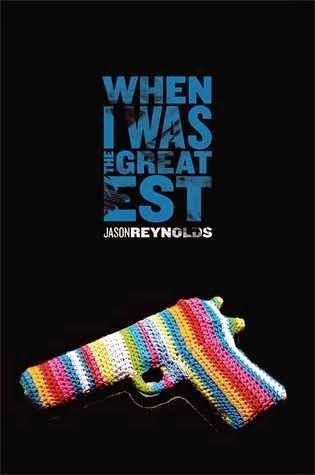

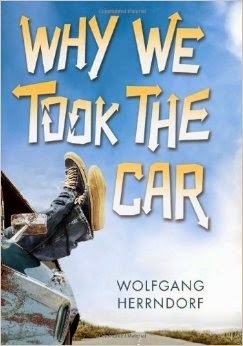
When I Was The Greatest by Jason Reynolds: Ali lives in Bed-Stuy, a Brooklyn neighborhood known for guns and drugs, but he and his sister, Jazz, and their neighbors, Needles and Noodles, stay out of trouble until they go to the wrong party, where one gets badly hurt and another leaves with a target on his back.
100 Sideways Miles by Andrew Smith: Finn Easton, sixteen and epileptic, struggles to feel like more than just a character in his father's cult-classic novels with the help of his best friend, Cade Hernandez, and first love, Julia, until Julia moves away.
Why We Took The Car by Wolfgang Herrndorf: Mike Klingenberg is a troubled fourteen-year-old from a disfunctional family in Berlin who thinks of himself as boring, so when a Russian juvenile delinquent called Tschick begins to pay attention to him and include Mike in his criminal activities, he is excited--until those activities lead to disaster on the autobahn.
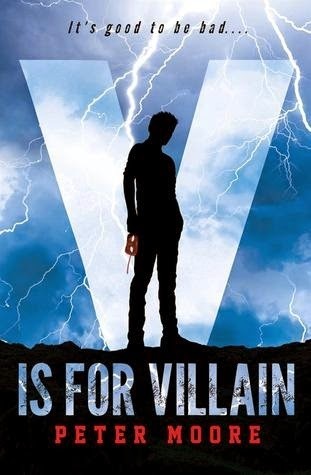
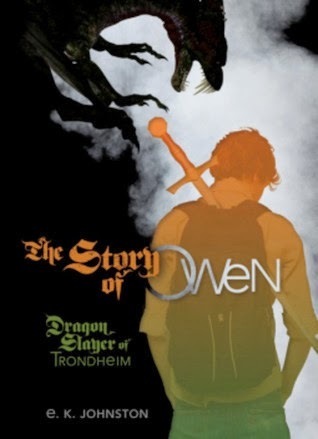
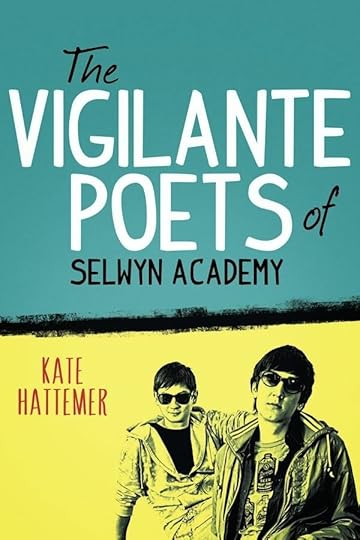
V is for Villain by Peter Moore: Brad Baron and his friends discover dangerous secrets about the superheroes running their society.
The Story of Owen by E. K. Johnston: In an alternate world where industrialization has caused many species of carbon-eating dragons to thrive, Owen, a slayer being trained by his famous father and aunt, and Siobahn, his bard, face a dragon infestation near their small town in Canada.
The Vigilante Poets of Selwyn Academy by Kate Hattemer: When a sleazy reality television show takes over Ethan's arts academy, he and his friends concoct an artsy plan to take it down.
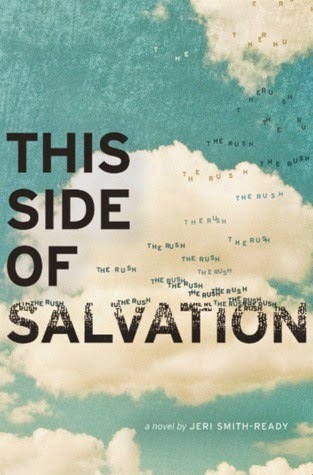


This Side of Salvation by Jeri Smith-Ready: After his older brother is killed, David turns to anger and his parents to religion, but just as David's life is beginning to make sense again his parents press him and his sister to join them in cutting worldly ties to prepare for the Rush, when the faithful will be whisked off to heaven.
There Will Come A Time by Carrie Arcos: Overwhelmed by grief and guilt after his twin sister Grace's accidental death, seventeen-year-old Mark Santos is persuaded by his best friend to complete the "bucket list" from Grace's journal.
The Other Way Around by Sashi Kaufman: To escape his offbeat family at Thanksgiving, Andrew West accepts a ride from a band of street performers who get their food and clothing from dumpsters, but as he learns more about these "Freegans" he sees that one cannot outrun the past.
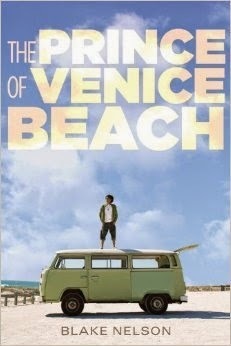
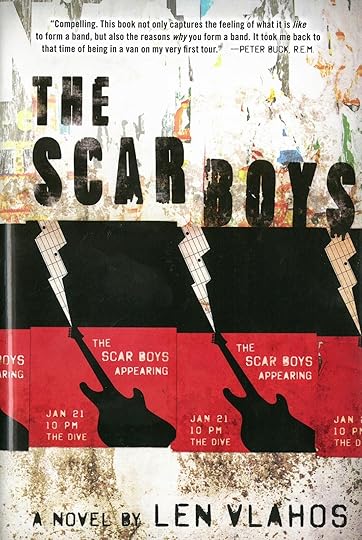

The Prince of Venice Beach by Blake Nelson: Robert "Cali" Callahan, seventeen, gets swept up into the private-investigator business and must deal with the ramifications of looking for fellow runaways who may not want to be found--and with falling in love with one of them.
The Scar Boys by Len Vlahos: Written as a college admission essay, eighteen-year-old Harry Jones recounts a childhood defined by the hideous scars he hid behind, and how forming a band brought self-confidence, friendship, and his first kiss.
The True Adventures of Nicolo Zen by Nicholas Christopher: Orphan Nicolo Zen is all alone in 1700s Venice, save for his clarinet, enchanted by a mysterious magician to allow its first player to perform expertly. Soon Nicolo is a famous virtuoso, wealthy beyond his dreams, but he can't stop wondering if he earned the success -- or the girl he met in Venice is safe from the harm.
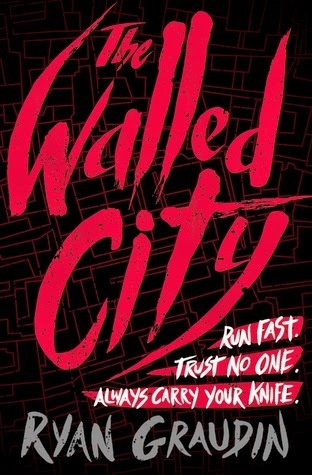
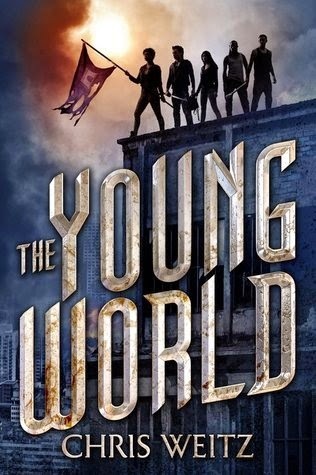
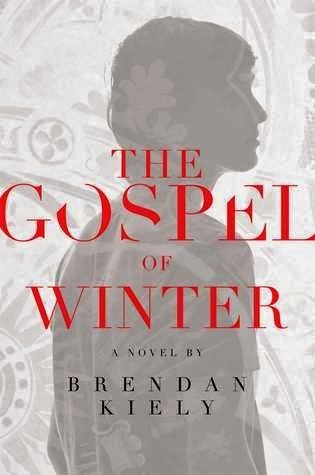
The Walled City by Ryan Graudin: As Jin Ling tries to save her sister, Mei Yee, from the Brotherhood of the Red Dragon in Hak Nam Walled City, one boy, Dai, can reunite them and save their lives--but only if he's willing to risk his own.
The Young World by Chris Weitz: Jefferson, with his childhood friend Donna, leads a tribe of teenagers in New York City on a dangerous quest to find an antidote for a mysterious illness that wiped out all adults and children.
The Gospel of Winter by Brendan Kiely: Managing the challenges of his fractured family by taking Adderall, sneaking drinks, and confiding in an abusive priest, Aidan finds support from new friends including a crush, a wild girl, and a swim-team captain with his own secrets.
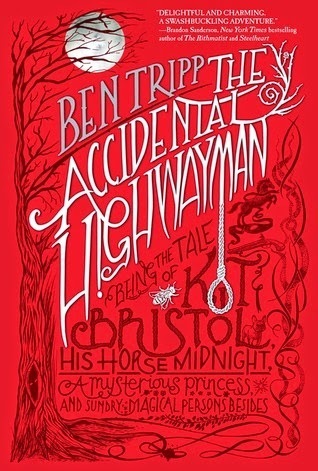
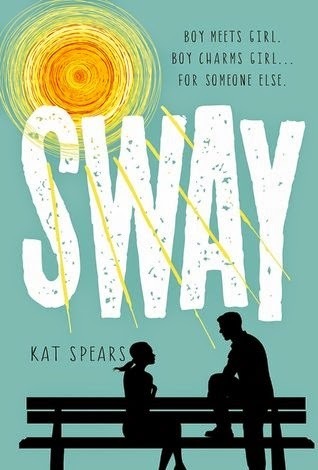
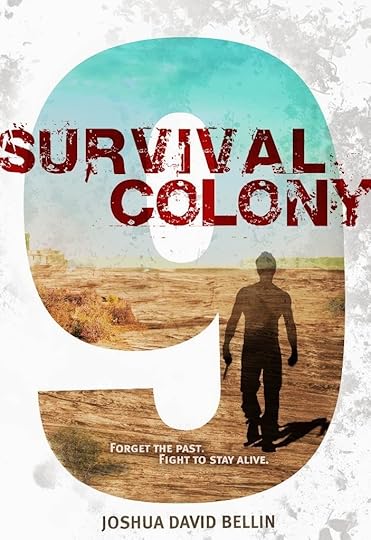
The Accidental Highwayman by Ben Tripp: In eighteenth-century England, young Christopher Kit Bristol is the unwitting servant of notorious highwayman Whistling Jack. One dark night, Kit finds his master bleeding from a mortal wound, dons the mans riding cloak to seek help, and changes the course of his life forever. Mistaken for Whistling Jack and on the run from redcoats, Kit is catapulted into a world of magic and wonders he thought the stuff of fairy tales. Bound by magical law, Kit takes up his masters quest to rescue a rebellious fairy princess from an arranged marriage to King George III of England. But his task is not an easy one, for Kit must contend with the feisty Princess Morgana, goblin attacks, and a magical map that portends his destiny: as a hanged man upon the gallows
Sway by Kat Spears: High school senior Sway could sell hell to a bishop. When Ken, captain of the football team, hires Jesse to help him win the heart of Bridget, Jesse agrees. While learning about Bridget, he falls helplessly in love. A Cyrano De Bergerac story with a modern twist, it's Jesse's point of view, his observations about the world around him unimpeded by empathy or compassion; until Bridget forces him to confront his devastation over a crushing event a year ago and just maybe feel something again.
Survival Colony 9 by Joshua David Bellin: Querry Gen, a member of one of the last human survivor groups following global war, is targeted by the monstrous Skaldi, although Querry has no memory of why.
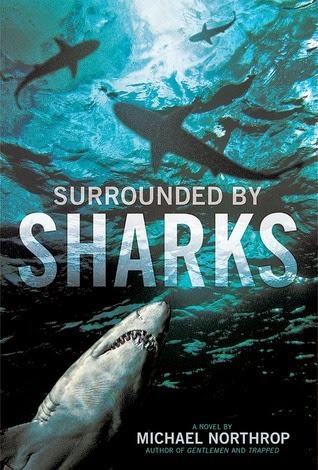

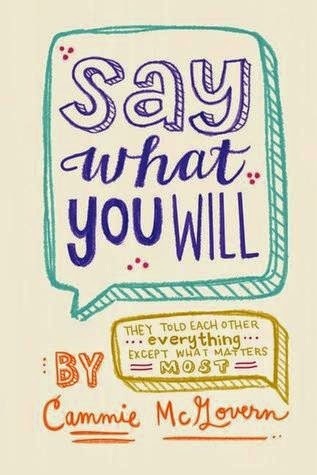
Surrounded by Sharks by Michael Northrop: On the first day of vacation thirteen-year-old Davey Tsering wakes up early, slips out of his family's hotel room without telling anyone, and heads for the beach and a swim in the warm Floridian waters--and a fateful meeting with a shark.
Schizo by Nic Sheff: A teenager recovering from a schizophrenic breakdown is driven to the point of obsession to find his missing younger brother and becomes wrapped up in a romance that may or may not be the real thing.
Say What You Will by Cammie McGovern: Born with cerebral palsy, Amy can't walk without a walker, talk without a voice box, or even fully control her facial expressions. Plagued by obsessive-compulsive disorder, Matthew is consumed with repeated thoughts, neurotic rituals, and crippling fear. Both in desperate need of someone to help them reach out to the world, Amy and Matthew are more alike than either ever realized. When Amy decides to hire student aides to help her in her senior year at Coral Hills High School, these two teens are thrust into each other's lives. As they begin to spend time with each other, what started as a blossoming friendship eventually grows into something neither expected.
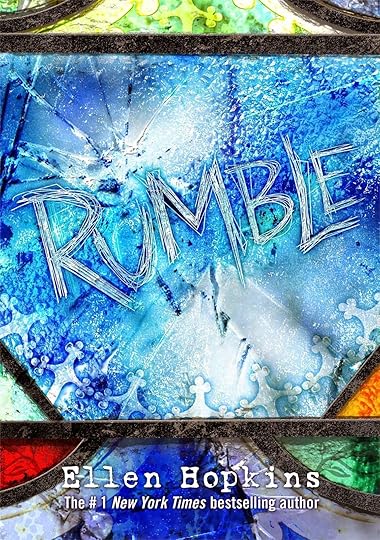
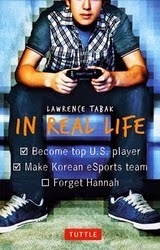

Rumble by Ellen Hopkins: Eighteen-year-old Matt's atheism is tested when, after a horrific accident of his own making that plunges him into a dark, quiet place, he hears a voice that calls everything he has ever disbelieved into question.
In Real Life by Lawrence Tabak: Fifteen-year-old math prodigy Seth Gordon hopes to compete professionally playing Starfare, the world's most popular computer game, but when he gets the chance to move to Korea and train full-time, he may not be ready for the culture shock and leaving his possible girlfriend, Hannah.
I'll Give You The Sun by Jandy Nelson: A story of first love, family, loss, and betrayal told from different points in time, and in separate voices, by artists Jude and her twin brother Noah.
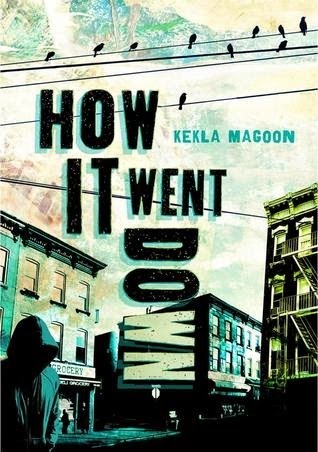
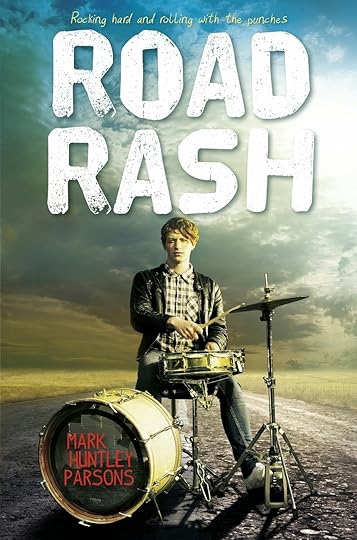
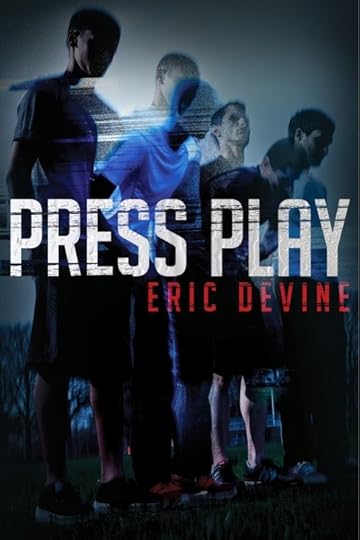
How It Went Down by Kekla Magoon: When sixteen-year-old Tariq Johnson is shot to death, his community is thrown into an uproar because Tariq was black and the shooter, Jack Franklin, is white, and in the aftermath everyone has something to say, but no two accounts of the events agree.
Road Rash by Mark Huntley Parsons: When teen drummer, Zach, signed up to spend the summer on tour with a rock band, he didn't realize the stairway to heaven was such a bumpy ride.
Press Play by Eric Devine: Greg Dunsmore, a.k.a. Dun the Ton, is focused on one thing: making a documentary that will guarantee his admission into the film school of his choice. Every day, Greg films his intense weight-loss focused workouts as well as the nonstop bullying that comes from his classmates. But when he captures footage of violent, extreme hazing by his high school’s championship-winning lacrosse team in the presence of his principal, Greg’s field of view is in for a readjustment. Greg knows there is a story to be told, but it is not clear exactly what. And his attempts to find out the truth only create more obstacles, not to mention physical harm upon himself. Yet if Greg wants to make his exposé his ticket out of town rather than a veritable death sentence, he will have to learn to play the game and find a team to help him. (Description via Goodreads).
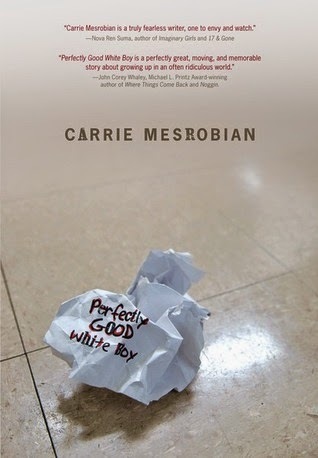
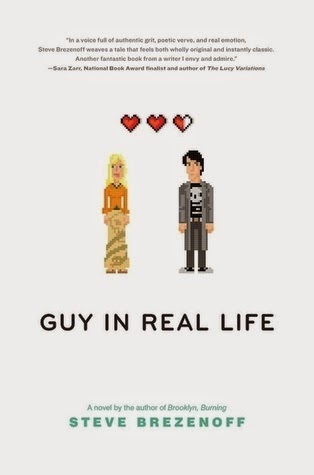

Perfectly Good White Boy by Carrie Mesrobian: After losing his virginity to an older girl who dumps him at the end of summer, Sean decides to join the Marines, but first he must get through his senior year of high school.
Guy In Real Life by Steve Brezenoff: The lives of two Minnesota teenagers are intertwined through the world of role-playing games.
Grasshopper Jungle by Andrew Smith: Austin Szerba narrates the end of humanity as he and his best friend Robby accidentally unleash an army of giant, unstoppable bugs and uncover the secrets of a decades-old experiment gone terribly wrong.


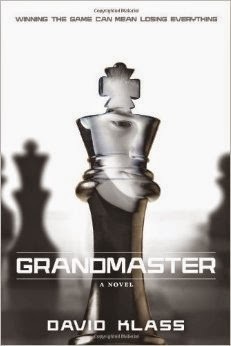
One Man Guy by Michael Barakiva: When Alek's high-achieving, Armenian-American parents send him to summer school, he thinks his summer is ruined. But then he meets Ethan, who opens his world in a series of truly unexpected ways.
Noggin by John Corey Whaley: After dying at age sixteen, Travis Coates' head was removed and frozen for five years before being attached to another body, and now the old Travis and the new must find a way to coexist while figuring out changes in his relationships.
Grandmaster by David Klass: A father-son chess tournament reveals the dark side of the game.
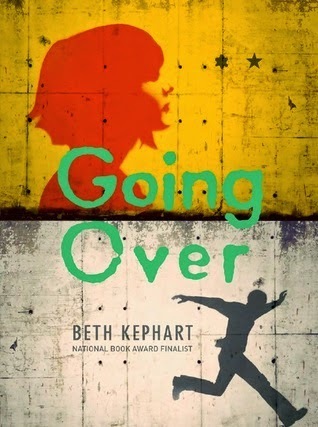
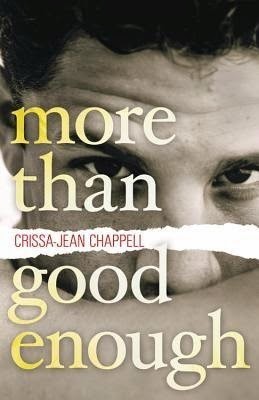

Going Over by Beth Kephart: In the early 1980s Ada and Stefan are young, would-be lovers living on opposite sides of the Berlin Wall--Ada lives with her mother and grandmother and paints graffiti on the Wall, and Stefan lives with his grandmother in the East and dreams of escaping to the West.
More Than Good Enough by Crissa-Jean Chappell: When seventeen-year-old Trent Osceola moves to the Rez to live with his father, a member of Florida's Miccosukee Tribe, he faces new questions about his identity and reconnects with his childhood friend Pippa.
Dirt Bikes, Drones, And Other Ways to Fly by Conrad Wesselhoeft: Seventeen year-old dirt-bike-riding daredevil Arlo Santiago catches the eye of the U.S. military with his first-place ranking on a video game featuring drone warfare, and must reconcile the work they want him to do with the emotional scars he has suffered following a violent death in his family.
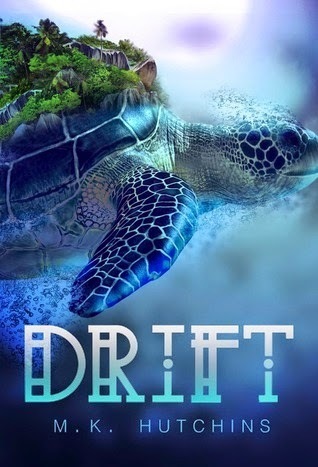
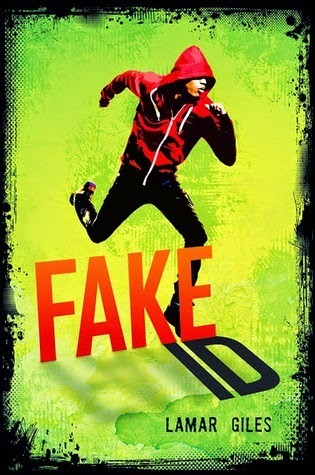
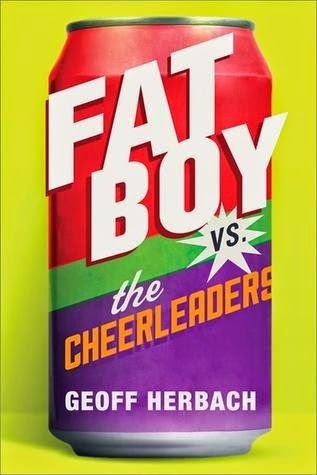
Drift by MK Hutchins: To raise his family out of poverty, seventeen-year-old Tenjat joins a dangerous defense against the naga monsters that gnaw at his drifting island's foundation.
Fake ID by Lamar Giles: An African-American teen in the Witness Protection Program moves to a new town and finds himself trying to solve a murder mystery when his first friend is found dead.
Fat Boy vs. The Cheerleaders by Geoff Herbach: When the high school cheerleading team takes over a soda vending machine's funds, which were previously collected by the pep band, Gabe Johnson, an overweight "band geek" tired of being called names and looked down on, declares war.
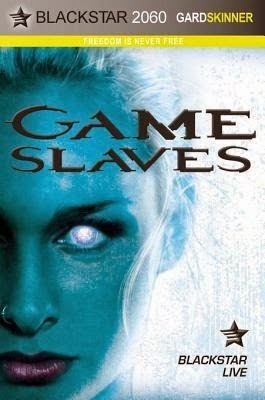
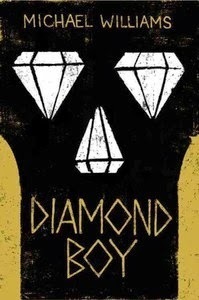
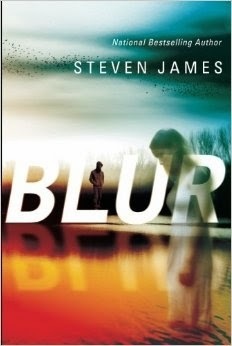
Game Slaves by Gard Skinner: A highly intelligent group of video game enemy non-player characters (NPC) begins to doubt they are merely codes in a machine. Their search for answers leads them to a gruesome discovery.
Diamond Boy by Michael Williams: When Patson's family moves to Marange region of Zimbabwe, he begins working in the mines, searching for blood diamonds, until government soldiers arrive and Patson is forced to journey to South Africa in search of his missing sister and a better life.
Blur by Steven James: The isolated town of Beldon, Wisconsin, is shocked when a high school freshman's body is found in Lake Algonquin. Just like everyone in the community, sixteen-year-old Daniel Byers believes that Emily Jackson's death was accidental. But at her funeral, when he has a terrifying vision of her, his world begins to rip apart at the seams. Convinced that Emily's appearance was more than just a mere hallucination, Daniel begins to look carefully into her death, even as he increasingly loses the ability to distinguish fantasy from reality. What's real? What's not? Where does reality end and madness begin? As Daniel struggles to find the truth, his world begins to crumble around him as he slips further and further into his own private blurred reality.
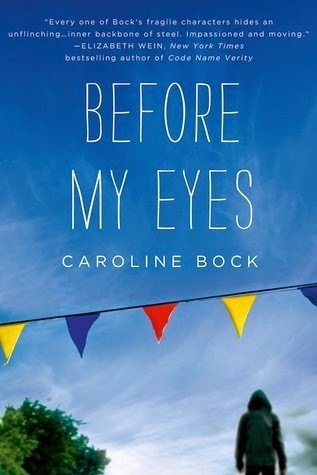
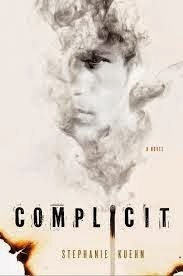
Before My Eyes by Caroline Bock: Told in three separate voices, dreamy Claire, seventeen, with her complicated home and love life, shy Max, also seventeen, a state senator's son whose parents are too focused on the next election to see his pain, and twenty-one-year-old paranoid schizophrenic Barkley teeter on the brink of destruction.
Complicit by Stephanie Kuehn: Jamie's mother was murdered when he was six, about seven years later his sister Cate was incarcerated for burning down a neighbor's barn, and now Jamie, fifteen, learns that Cate has been released and is coming back for him, blaming him for all the bad things that led to her arrest.
Call Me By My Name by John Ed Bradley: Growing up in Louisiana in the late 1960s, where segregation and prejudice still thrive, two high school football players, one white, one black, become friends, but some changes are too difficult to accept.
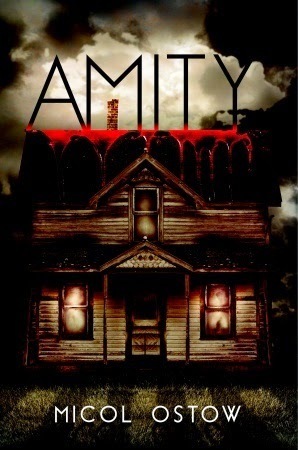
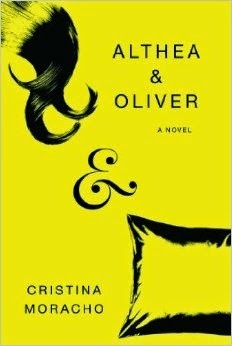
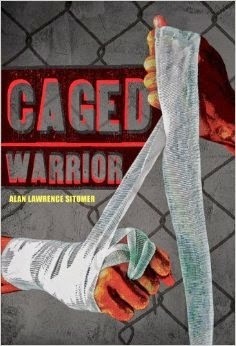
Amity by Micol Ostow: Two teens narrate the terrifying days and nights they spend living in a house of horrors.
Althea & Oliver by Cristina Moracho: Althea and Oliver, who have been friends since age six and are now high school juniors, find their friendship changing because he has contracted Kleine-Levin Syndrome.
Caged Warrior by Alan Lawrence Sitomer: From age three, McCutcheon Daniels, now sixteen, has been trained in Mixed Martial Arts and must keep winning to feed his five-year-old sister and father, but chance presents an opportunity to get out of the Detroit slums using his brain instead of his fighting skills.
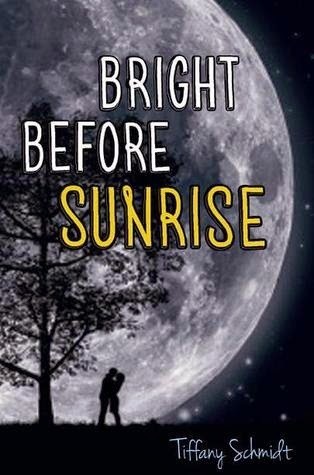
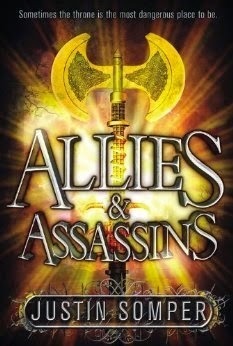
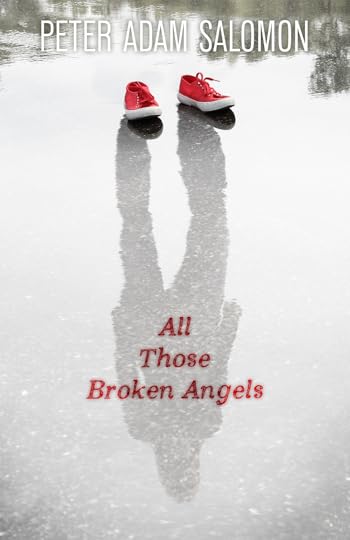
Bright Before Sunrise by Tiffany Schmidt: Jonah and Brighton are about to have the most awkwardly awful night of their lives. For Jonah, every aspect of his new life reminds him of what he has had to give up. All he wants is to be left alone. Brighton is popular, pretty, and always there to help anyone, but has no idea of what she wants for herself.
Allies & Assassins by Justin Somper: Sixteen-year-old Jared inherits the throne of Archenfield after his older brother, Prince Anders, is murdered. He relies on the twelve officers of the court to advise him but soon suspects one of them could be responsible for his brother's death and vows to hunt down the killer, who may be after Jared as well.
All Those Broken Angels by Peter Adam Salomon: Both haunted and inspired by the shadow of his best friend, Melanie, since her disappearance and presumed death when they were six, Richard, now sixteen, is completely unprepared when a new classmate, Melanie, arrives at Savannah Arts Academy High School claiming to be that same friend.
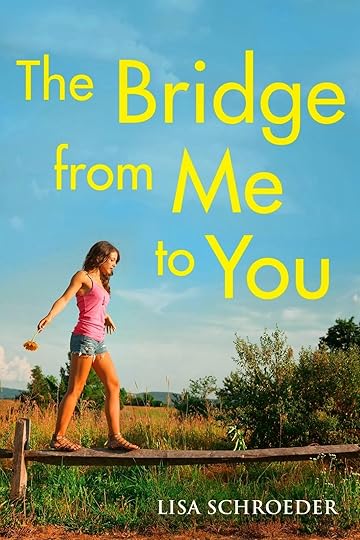
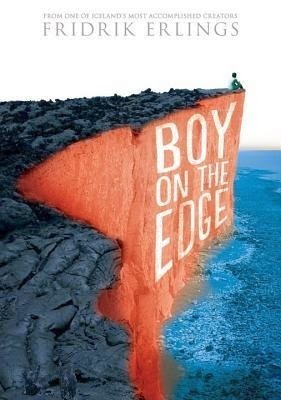
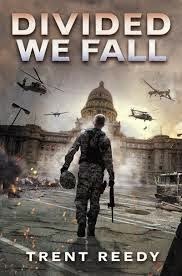
The Bridge from Me to You by Lisa Schroeder: Lauren is the new girl in town with a dark secret. Colby is the football hero with a dream of something more. In alternating chapters they come together, fall apart, and build something stronger than either of them thought possible--something to truly believe in.
Boy on the Edge by Fridrik Erlings: Henry has a clubfoot and he is the target of relentless bullying. One day, in a violent fit of anger, Henry lashes out at the only family he has-- his mother. Sent to live with other troubled boys at the Home of Lesser Brethren, an isolated farm perched in the craggy lava fields along the unforgiving Icelandic coast, Henry finds a precarious contentment among the cows. But it is the people, including the manic preacher who runs the home, who fuel Henry's frustration and sometimes rage as he yearns for a life and a home. Author Fridrik Erlings offers a young adult novel that explores cruelty and desperation, tenderness and remorse, but most importantly, kindness and friendship.
Divided We Fall by Trent Reedy: Danny Wright, seventeen, joined the Idaho Army National Guard to serve the country as his father had, but when the Guard is sent to an anti-government protest in Boise and Danny's gun accidently fires, he finds himself at the center of a conflict that results in the federal government declaring war on Idaho.






 Related StoriesDoomed Cities of History and LegendMatriarchal SocietiesGet Genrefied: Climate Fiction (Cli-Fi)
Related StoriesDoomed Cities of History and LegendMatriarchal SocietiesGet Genrefied: Climate Fiction (Cli-Fi)
That said, I thought for those looking for more male narrated books, it would be worthwhile to do a big round-up of books out this year or coming out in the next couple of months that do feature them. This won't be an exhaustive list, but it's pretty thorough and features titles from a wide range of genres. Some of these books we've talked about, some we will talk about, and some we haven't and likely won't talk about. There's no shortage of male-narrated books; in fact, many of this year's "biggest" books are male-POV books (both of the Andrew Smith titles, John Corey Whaley's title, and Jandy Nelson's dual-voiced book).
As always, there's no comment here about these books being "for boys" or "for girls." Rather, it's my hope all readers will find something to appreciate; sometimes you just want a story with a male narrator.
All descriptions are from WorldCat unless otherwise noted, and I'd love any additional suggestions of books from 2014 that feature male main characters. I'm including titles where the male main character is part of a dual or cast of voices as well, and I'm sticking to books that are first in a series -- so series books that had volume 3 or 4 out this year, I'm not including. I've also limited to traditionally-published titles.



When I Was The Greatest by Jason Reynolds: Ali lives in Bed-Stuy, a Brooklyn neighborhood known for guns and drugs, but he and his sister, Jazz, and their neighbors, Needles and Noodles, stay out of trouble until they go to the wrong party, where one gets badly hurt and another leaves with a target on his back.
100 Sideways Miles by Andrew Smith: Finn Easton, sixteen and epileptic, struggles to feel like more than just a character in his father's cult-classic novels with the help of his best friend, Cade Hernandez, and first love, Julia, until Julia moves away.
Why We Took The Car by Wolfgang Herrndorf: Mike Klingenberg is a troubled fourteen-year-old from a disfunctional family in Berlin who thinks of himself as boring, so when a Russian juvenile delinquent called Tschick begins to pay attention to him and include Mike in his criminal activities, he is excited--until those activities lead to disaster on the autobahn.



V is for Villain by Peter Moore: Brad Baron and his friends discover dangerous secrets about the superheroes running their society.
The Story of Owen by E. K. Johnston: In an alternate world where industrialization has caused many species of carbon-eating dragons to thrive, Owen, a slayer being trained by his famous father and aunt, and Siobahn, his bard, face a dragon infestation near their small town in Canada.
The Vigilante Poets of Selwyn Academy by Kate Hattemer: When a sleazy reality television show takes over Ethan's arts academy, he and his friends concoct an artsy plan to take it down.



This Side of Salvation by Jeri Smith-Ready: After his older brother is killed, David turns to anger and his parents to religion, but just as David's life is beginning to make sense again his parents press him and his sister to join them in cutting worldly ties to prepare for the Rush, when the faithful will be whisked off to heaven.
There Will Come A Time by Carrie Arcos: Overwhelmed by grief and guilt after his twin sister Grace's accidental death, seventeen-year-old Mark Santos is persuaded by his best friend to complete the "bucket list" from Grace's journal.
The Other Way Around by Sashi Kaufman: To escape his offbeat family at Thanksgiving, Andrew West accepts a ride from a band of street performers who get their food and clothing from dumpsters, but as he learns more about these "Freegans" he sees that one cannot outrun the past.



The Prince of Venice Beach by Blake Nelson: Robert "Cali" Callahan, seventeen, gets swept up into the private-investigator business and must deal with the ramifications of looking for fellow runaways who may not want to be found--and with falling in love with one of them.
The Scar Boys by Len Vlahos: Written as a college admission essay, eighteen-year-old Harry Jones recounts a childhood defined by the hideous scars he hid behind, and how forming a band brought self-confidence, friendship, and his first kiss.
The True Adventures of Nicolo Zen by Nicholas Christopher: Orphan Nicolo Zen is all alone in 1700s Venice, save for his clarinet, enchanted by a mysterious magician to allow its first player to perform expertly. Soon Nicolo is a famous virtuoso, wealthy beyond his dreams, but he can't stop wondering if he earned the success -- or the girl he met in Venice is safe from the harm.



The Walled City by Ryan Graudin: As Jin Ling tries to save her sister, Mei Yee, from the Brotherhood of the Red Dragon in Hak Nam Walled City, one boy, Dai, can reunite them and save their lives--but only if he's willing to risk his own.
The Young World by Chris Weitz: Jefferson, with his childhood friend Donna, leads a tribe of teenagers in New York City on a dangerous quest to find an antidote for a mysterious illness that wiped out all adults and children.
The Gospel of Winter by Brendan Kiely: Managing the challenges of his fractured family by taking Adderall, sneaking drinks, and confiding in an abusive priest, Aidan finds support from new friends including a crush, a wild girl, and a swim-team captain with his own secrets.



The Accidental Highwayman by Ben Tripp: In eighteenth-century England, young Christopher Kit Bristol is the unwitting servant of notorious highwayman Whistling Jack. One dark night, Kit finds his master bleeding from a mortal wound, dons the mans riding cloak to seek help, and changes the course of his life forever. Mistaken for Whistling Jack and on the run from redcoats, Kit is catapulted into a world of magic and wonders he thought the stuff of fairy tales. Bound by magical law, Kit takes up his masters quest to rescue a rebellious fairy princess from an arranged marriage to King George III of England. But his task is not an easy one, for Kit must contend with the feisty Princess Morgana, goblin attacks, and a magical map that portends his destiny: as a hanged man upon the gallows
Sway by Kat Spears: High school senior Sway could sell hell to a bishop. When Ken, captain of the football team, hires Jesse to help him win the heart of Bridget, Jesse agrees. While learning about Bridget, he falls helplessly in love. A Cyrano De Bergerac story with a modern twist, it's Jesse's point of view, his observations about the world around him unimpeded by empathy or compassion; until Bridget forces him to confront his devastation over a crushing event a year ago and just maybe feel something again.
Survival Colony 9 by Joshua David Bellin: Querry Gen, a member of one of the last human survivor groups following global war, is targeted by the monstrous Skaldi, although Querry has no memory of why.



Surrounded by Sharks by Michael Northrop: On the first day of vacation thirteen-year-old Davey Tsering wakes up early, slips out of his family's hotel room without telling anyone, and heads for the beach and a swim in the warm Floridian waters--and a fateful meeting with a shark.
Schizo by Nic Sheff: A teenager recovering from a schizophrenic breakdown is driven to the point of obsession to find his missing younger brother and becomes wrapped up in a romance that may or may not be the real thing.
Say What You Will by Cammie McGovern: Born with cerebral palsy, Amy can't walk without a walker, talk without a voice box, or even fully control her facial expressions. Plagued by obsessive-compulsive disorder, Matthew is consumed with repeated thoughts, neurotic rituals, and crippling fear. Both in desperate need of someone to help them reach out to the world, Amy and Matthew are more alike than either ever realized. When Amy decides to hire student aides to help her in her senior year at Coral Hills High School, these two teens are thrust into each other's lives. As they begin to spend time with each other, what started as a blossoming friendship eventually grows into something neither expected.



Rumble by Ellen Hopkins: Eighteen-year-old Matt's atheism is tested when, after a horrific accident of his own making that plunges him into a dark, quiet place, he hears a voice that calls everything he has ever disbelieved into question.
In Real Life by Lawrence Tabak: Fifteen-year-old math prodigy Seth Gordon hopes to compete professionally playing Starfare, the world's most popular computer game, but when he gets the chance to move to Korea and train full-time, he may not be ready for the culture shock and leaving his possible girlfriend, Hannah.
I'll Give You The Sun by Jandy Nelson: A story of first love, family, loss, and betrayal told from different points in time, and in separate voices, by artists Jude and her twin brother Noah.



How It Went Down by Kekla Magoon: When sixteen-year-old Tariq Johnson is shot to death, his community is thrown into an uproar because Tariq was black and the shooter, Jack Franklin, is white, and in the aftermath everyone has something to say, but no two accounts of the events agree.
Road Rash by Mark Huntley Parsons: When teen drummer, Zach, signed up to spend the summer on tour with a rock band, he didn't realize the stairway to heaven was such a bumpy ride.
Press Play by Eric Devine: Greg Dunsmore, a.k.a. Dun the Ton, is focused on one thing: making a documentary that will guarantee his admission into the film school of his choice. Every day, Greg films his intense weight-loss focused workouts as well as the nonstop bullying that comes from his classmates. But when he captures footage of violent, extreme hazing by his high school’s championship-winning lacrosse team in the presence of his principal, Greg’s field of view is in for a readjustment. Greg knows there is a story to be told, but it is not clear exactly what. And his attempts to find out the truth only create more obstacles, not to mention physical harm upon himself. Yet if Greg wants to make his exposé his ticket out of town rather than a veritable death sentence, he will have to learn to play the game and find a team to help him. (Description via Goodreads).



Perfectly Good White Boy by Carrie Mesrobian: After losing his virginity to an older girl who dumps him at the end of summer, Sean decides to join the Marines, but first he must get through his senior year of high school.
Guy In Real Life by Steve Brezenoff: The lives of two Minnesota teenagers are intertwined through the world of role-playing games.
Grasshopper Jungle by Andrew Smith: Austin Szerba narrates the end of humanity as he and his best friend Robby accidentally unleash an army of giant, unstoppable bugs and uncover the secrets of a decades-old experiment gone terribly wrong.



One Man Guy by Michael Barakiva: When Alek's high-achieving, Armenian-American parents send him to summer school, he thinks his summer is ruined. But then he meets Ethan, who opens his world in a series of truly unexpected ways.
Noggin by John Corey Whaley: After dying at age sixteen, Travis Coates' head was removed and frozen for five years before being attached to another body, and now the old Travis and the new must find a way to coexist while figuring out changes in his relationships.
Grandmaster by David Klass: A father-son chess tournament reveals the dark side of the game.



Going Over by Beth Kephart: In the early 1980s Ada and Stefan are young, would-be lovers living on opposite sides of the Berlin Wall--Ada lives with her mother and grandmother and paints graffiti on the Wall, and Stefan lives with his grandmother in the East and dreams of escaping to the West.
More Than Good Enough by Crissa-Jean Chappell: When seventeen-year-old Trent Osceola moves to the Rez to live with his father, a member of Florida's Miccosukee Tribe, he faces new questions about his identity and reconnects with his childhood friend Pippa.
Dirt Bikes, Drones, And Other Ways to Fly by Conrad Wesselhoeft: Seventeen year-old dirt-bike-riding daredevil Arlo Santiago catches the eye of the U.S. military with his first-place ranking on a video game featuring drone warfare, and must reconcile the work they want him to do with the emotional scars he has suffered following a violent death in his family.



Drift by MK Hutchins: To raise his family out of poverty, seventeen-year-old Tenjat joins a dangerous defense against the naga monsters that gnaw at his drifting island's foundation.
Fake ID by Lamar Giles: An African-American teen in the Witness Protection Program moves to a new town and finds himself trying to solve a murder mystery when his first friend is found dead.
Fat Boy vs. The Cheerleaders by Geoff Herbach: When the high school cheerleading team takes over a soda vending machine's funds, which were previously collected by the pep band, Gabe Johnson, an overweight "band geek" tired of being called names and looked down on, declares war.



Game Slaves by Gard Skinner: A highly intelligent group of video game enemy non-player characters (NPC) begins to doubt they are merely codes in a machine. Their search for answers leads them to a gruesome discovery.
Diamond Boy by Michael Williams: When Patson's family moves to Marange region of Zimbabwe, he begins working in the mines, searching for blood diamonds, until government soldiers arrive and Patson is forced to journey to South Africa in search of his missing sister and a better life.
Blur by Steven James: The isolated town of Beldon, Wisconsin, is shocked when a high school freshman's body is found in Lake Algonquin. Just like everyone in the community, sixteen-year-old Daniel Byers believes that Emily Jackson's death was accidental. But at her funeral, when he has a terrifying vision of her, his world begins to rip apart at the seams. Convinced that Emily's appearance was more than just a mere hallucination, Daniel begins to look carefully into her death, even as he increasingly loses the ability to distinguish fantasy from reality. What's real? What's not? Where does reality end and madness begin? As Daniel struggles to find the truth, his world begins to crumble around him as he slips further and further into his own private blurred reality.


Before My Eyes by Caroline Bock: Told in three separate voices, dreamy Claire, seventeen, with her complicated home and love life, shy Max, also seventeen, a state senator's son whose parents are too focused on the next election to see his pain, and twenty-one-year-old paranoid schizophrenic Barkley teeter on the brink of destruction.
Complicit by Stephanie Kuehn: Jamie's mother was murdered when he was six, about seven years later his sister Cate was incarcerated for burning down a neighbor's barn, and now Jamie, fifteen, learns that Cate has been released and is coming back for him, blaming him for all the bad things that led to her arrest.
Call Me By My Name by John Ed Bradley: Growing up in Louisiana in the late 1960s, where segregation and prejudice still thrive, two high school football players, one white, one black, become friends, but some changes are too difficult to accept.



Amity by Micol Ostow: Two teens narrate the terrifying days and nights they spend living in a house of horrors.
Althea & Oliver by Cristina Moracho: Althea and Oliver, who have been friends since age six and are now high school juniors, find their friendship changing because he has contracted Kleine-Levin Syndrome.
Caged Warrior by Alan Lawrence Sitomer: From age three, McCutcheon Daniels, now sixteen, has been trained in Mixed Martial Arts and must keep winning to feed his five-year-old sister and father, but chance presents an opportunity to get out of the Detroit slums using his brain instead of his fighting skills.



Bright Before Sunrise by Tiffany Schmidt: Jonah and Brighton are about to have the most awkwardly awful night of their lives. For Jonah, every aspect of his new life reminds him of what he has had to give up. All he wants is to be left alone. Brighton is popular, pretty, and always there to help anyone, but has no idea of what she wants for herself.
Allies & Assassins by Justin Somper: Sixteen-year-old Jared inherits the throne of Archenfield after his older brother, Prince Anders, is murdered. He relies on the twelve officers of the court to advise him but soon suspects one of them could be responsible for his brother's death and vows to hunt down the killer, who may be after Jared as well.
All Those Broken Angels by Peter Adam Salomon: Both haunted and inspired by the shadow of his best friend, Melanie, since her disappearance and presumed death when they were six, Richard, now sixteen, is completely unprepared when a new classmate, Melanie, arrives at Savannah Arts Academy High School claiming to be that same friend.



The Bridge from Me to You by Lisa Schroeder: Lauren is the new girl in town with a dark secret. Colby is the football hero with a dream of something more. In alternating chapters they come together, fall apart, and build something stronger than either of them thought possible--something to truly believe in.
Boy on the Edge by Fridrik Erlings: Henry has a clubfoot and he is the target of relentless bullying. One day, in a violent fit of anger, Henry lashes out at the only family he has-- his mother. Sent to live with other troubled boys at the Home of Lesser Brethren, an isolated farm perched in the craggy lava fields along the unforgiving Icelandic coast, Henry finds a precarious contentment among the cows. But it is the people, including the manic preacher who runs the home, who fuel Henry's frustration and sometimes rage as he yearns for a life and a home. Author Fridrik Erlings offers a young adult novel that explores cruelty and desperation, tenderness and remorse, but most importantly, kindness and friendship.
Divided We Fall by Trent Reedy: Danny Wright, seventeen, joined the Idaho Army National Guard to serve the country as his father had, but when the Guard is sent to an anti-government protest in Boise and Danny's gun accidently fires, he finds himself at the center of a conflict that results in the federal government declaring war on Idaho.







 Related StoriesDoomed Cities of History and LegendMatriarchal SocietiesGet Genrefied: Climate Fiction (Cli-Fi)
Related StoriesDoomed Cities of History and LegendMatriarchal SocietiesGet Genrefied: Climate Fiction (Cli-Fi)
Published on September 07, 2014 22:00
September 4, 2014
This Week at Book Riot
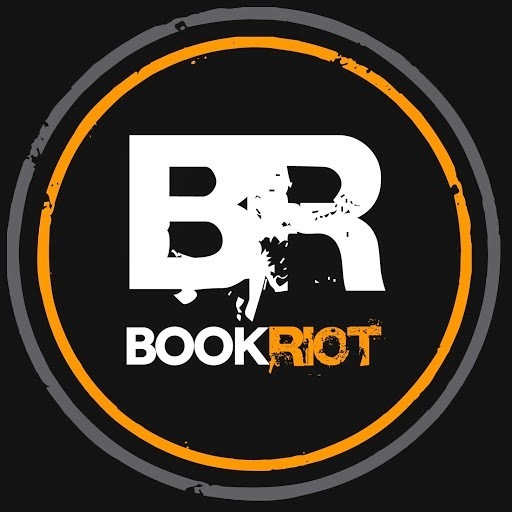
Over at Book Riot this week...
Take a literary tour of the Great Plains states. This was a lot of fun to write. Also, I'd hoped to find more to do in North Dakota that was literary, but there really isn't much. Despite the lack of places to visit, it's impressive how much literary culture there is anyway.
Last week's 3 on a YA theme was about YA books made into films you could watch instantly on Netflix. Since I found more than 3 solid choices, I decided to do a second round of 3 YA films you can watch right now on Netflix this week. Except my idea of 3 is more like 4.







 Related StoriesThis Week at Book Riot
Related StoriesThis Week at Book Riot
Published on September 04, 2014 22:00
September 3, 2014
Girls Like Us by Gail Giles
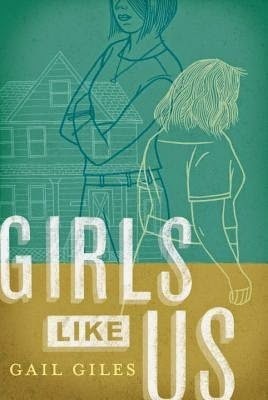 Biddy and Quincy are two special education students. Or at least, they were special education students until they graduated from high school. Now, they've been placed together in an apartment that sits behind a home of an older woman who they're responsible for helping out. She's almost like their overseer, but she's really not (or at least, she's not hugely invested in that role).
Biddy and Quincy are two special education students. Or at least, they were special education students until they graduated from high school. Now, they've been placed together in an apartment that sits behind a home of an older woman who they're responsible for helping out. She's almost like their overseer, but she's really not (or at least, she's not hugely invested in that role).The two girls were placed together following graduation for legal reasons, but the caseworker who paired them together did so for very specific reasons. Ones which Quincy can't make sense of and ones which leave her more frustrated than content.
See, Quincy is a rough-around-the-edges kind of girl. She's got a facial scar, thanks to a horrific young home life, and she wears her hurt, her anger, and her defenses like armor. When she's moved into this apartment, she's given a job to work outside the home, at a local store. She's capable of doing it, despite what others might think of or perceive of her skills because of her education. Though Quincy's told she and Biddy are to share their home responsibilities -- it's a way for the two of them to both acquire new skills -- Quincy is a good cook and takes on the cooking for all meals, rather than splitting the task with Biddy. In return, Biddy cleans.
Biddy is almost the polar opposite of Quincy. She's exceptionally sweet and kind, with a large heart. This is despite her own rough past, one which comes through periodically in the story but isn't fully exposed until it needs to be. Unlike Quincy, Biddy wears her scars internally, and her external persona is that gentle nature. She's not rough. She's not tough. She mothers a duck and ducklings that appear in her garden, taking extreme efforts to protect and nurture them, to ensure that the babies and mom survive in their out-of-place home. But Biddy is scared, and that scared comes out in somewhat unexpected ways.
Girls Like Us by Gail Giles is a dual-voiced novel, written with short chapters and in a style that reflects the authentic voices of these two girls. They don't speak or think in entirely perfect sentences or use proper grammar -- but it's never once distracting nor is it belittling. In many ways, this choice in style is exceptionally respectful of these girls, how they think, and why seeing how they think this way matters. Never does it feel like the girls are being made fun of nor that their special education status makes them anything less than fully human.
This isn't an easy read, though, despite the fact it is fast paced. It's engaging, but the horrors both girls experience are unbelievable. Biddy, who is sweet on the outside, has been raped in the past. Not only had she been raped, but she had become pregnant and her caretaker at the time forced her to give up the baby for adoption. Though Quincy thinks of her as a slutty kind of girl initially -- and Quincy is quick to judge the fact she's fat to seeing her once with candy and snacks tucked inside her clothes -- but as Biddy opens up to Quincy following something horrific that happens to her (spoiler: Quincy is also a victim of sexual violence, at the hands of a coworker who we know early on is suspicious), Quincy begins to see that Biddy's exterior isn't the whole of her.
There's a lot to mine here in terms of armor and how we wear our scars. This is a realization Quincy comes to, too: she's biting and tough in her words, and her scar becomes quite representative of how she feels on the inside. Biddy wears her wounds with her body. She eats -- or did eat -- for comfort and solace. While many times this character trait can be problematic in books, as it's such an easy way to explain why a character is fat, rather than allowing them to be fat, Giles does a great job not doing that here. She's giving an explanation, but she's not making Biddy's life about her body. Where it once was what Quincy saw as what defined Biddy, Quincy is the one who realizes what a crummy way it is to judge someone. She knows she wouldn't want people to judge her by her exterior. Perhaps, too, it's worth mentioning here that Quincy is a person of color, and that becomes a topic she broaches in her side of the story.
Girls Like Us isn't perfect, despite how many things it does right. At times the format and the pacing mean that huge plot points are rushed over or shoehorned in in a way that doesn't feel authentic. There's a moment when -- spoiler -- the woman who Biddy and Quincy work for tries to reunite Biddy with the child she'd given up for adoption. This entire scene felt uncomfortable because it wasn't fleshed out well, and while that is part of the point (Lizabeth hadn't thought this through when she decided to pursue this), it felt like one thing too many in a story that had been handling a lot of issues very well.
That said, one of the best parts of this book, and why I keep thinking about it long after finishing it, is that Giles wrote a book about girls. There's not a romance here, and even when boys become a problem within the story, they're not turned into enemies -- Biddy's fearful of them, but she's not hateful toward them. More importantly, girls aren't enemies, either. There aren't "other girls" in this book. There aren't girls who are special or more valuable or more different than others. These are two girls who learn how to work with one another and who come to love one another for their strengths and for their flaws. These are two girls who, despite being so different, have a shared core to them. Quincy and Biddy build one another up and they are there for one another through some really tough stuff in a way that empowers their relationship and in a way that empowers them individually. They're not saved and they're not saving. They're respecting each other and learning how to grow and become individuals. This is a powerful and all-too-rare message in YA. Though these girls have been a part of special education, they aren't any less human than anyone else.
Giles respects these girls so much, and it's through Quincy and Biddy's voices that we begin to understand how labels such as "differently abled" and "special education" or any other euphemism can be useful and can be hurtful. As Quincy says to one of her coworkers, she's not dumb. She's just been given a different education because some things are hard for her to grasp. It doesn't mean she's unable to function in the world; she just has to adjust her functioning to suit her strengths and accommodate her weaknesses.
Pass Girls Like Us off to readers who like gritty novels, as well as those who like a fast-paced book. This will appeal to reluctant readers, as well as more advanced readers, and it certainly should be given to those who are seeking stories set after high school and not in college. These girls are part of the working class, and Giles knocks the economics of this out of the park. Likewise, readers who are looking for books about girls, about friendship, about tolerance, and about how those with learning challenges operate in the real world will find so much to enjoy here. By far, my favorite Gail Giles read.
Girls Like Us is available now. Copy picked up from the library.







 Related StoriesPalace of Spies by Sarah ZettelTomboy by Liz PrinceSuicide and Depression in YA: A Discussion and Book List
Related StoriesPalace of Spies by Sarah ZettelTomboy by Liz PrinceSuicide and Depression in YA: A Discussion and Book List
Published on September 03, 2014 22:00
September 2, 2014
Get Genrefied: Mythology
For this month's genre guide, we're tackling mythology, which actually crosses genres. Though it's most often associated with fantasy (the myths themselves are full of what modern readers would call magic), there are also some intriguing mythology-inspired stories that are strictly realistic, plus some historical fiction and science fiction too. Part of the appeal of mythology, much like with fairy tale re-tellings, is its ability to recall familiar stories while simultaneously making them new again.
In this guide, we use the word "mythology" to mean a collection of traditional or legendary stories, often involving gods and goddesses. Usually, myths are created to explain phenomena that can't be explained using natural or scientific means (how the earth and humanity came to be, for example). We focus mainly on ancient mythology here: the religious and spiritual beliefs of peoples long-dead that are generally considered untrue - therefore mythical - by modern humans. That said, it's certainly possible to call more modern religious or spiritual beliefs "mythical" - and some people do. I took a class in college where the professor stated the only difference between mythology and modern religion is that no one believes in the myths anymore. (Not all of you may agree with this, but it's interesting to think about.)
This is important to consider when choosing the right term for a particular book inspired by a traditional story - is the story a myth or a religious parable? The word "myth" is heavily loaded and implies untruth. This might be more of a challenge for Western librarians who come across non-Western stories featuring gods and goddesses about which they know very little. (All the more reason to become acquainted with the beliefs of all peoples across the world and know which beliefs are mythical and which remain a part of the living religion.)
Mythology is ripe for re-imaginings since it's already full of action, war, love, and betrayal - the stuff of any good story. It's a perennially popular topic for kids and teens and will often lead them to check out some nonfiction on their favorite gods, goddesses, or creatures. (Edith Hamilton's Mythology is the classic work, and younger kids at my library have loved the Mythlopedia books from Scholastic.) Greek mythology reigns; this was true even before Percy Jackson conquered the shelves. Still, the success of Rick Riordan's novels has given rise to mythology-inspired stories from many different pantheons, including Norse, Japanese, and Korean.
Before we get to the booklist, here are a few resources of interest:
The Mythopoeic Society gives out an annual award for books in the fields of myth and fantasy. They have an adult category as well as a children's (including YA) category. You won't find a lot of Greek or Egyptian mythology-inspired winners here. Instead, the society focuses on recognizing books that best exemplify the spirit of the Inklings (a group of Oxford academics and writers which included J. R. R. Tolkien and C. S. Lewis). The mythology recognized in the Mythopoeic Award is usually that of the writers' own making, meaning honored books will often have interesting, detailed world-building. They also honor nonfiction work in the field - in Inklings studies as well as myth & fantasy studies. Recent winners and finalists include Vessel by Sarah Beth Durst, The Queen's Thief series by Megan Whalen Turner, and Graceling by Kristin Cashore. The Encyclopedia Mythica is an online treasure trove of myths and folklore from all parts of the world. It currently has over 7,000 entries, plus a bestiary, image gallery, and genealogical tables. Rick Riordan's website has a bunch of information about mythology, including links to further resources: Explore Greek Mythology and Explore Egyptian Mythology Epic Reads' chart of 162 YA Retellings is worth revisiting since they include mythology. They even break down Greco-Roman mythology by myth - Hades/Persephone, Cupid/Psyche, Helen of Troy, and everything else. This post from Brittany at the Book Addicts' Guide is about a project where participating bloggers wrote about various classics retold during September of 2013. Brittany was in charge of mythology, so her introductory post features a lot of great examples. As part of that project, Molly Wetta at Wrapped Up in Books wrote about Norse mythology re-tellings.
A lot of mythology-inspired stories being published today are more middle grade than YA, probably due to Percy Jackson's influence (think of Loki's Wolves or The Savage Fortress ). Riordan's stories have good crossover appeal to teens, though, and I wouldn't be surprised if other middle grade mythology stories do as well. That said, there are plenty of solidly teen stories about mythology out there, and we've compiled a list for you below. They're mainly broken down by pantheon, though those with only one or two books have been combined by region.
If you know of any others, particularly realistic or Asian or African-inspired, please let us know in the comments.
Greek & Roman
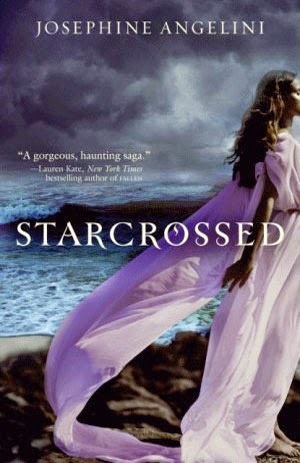
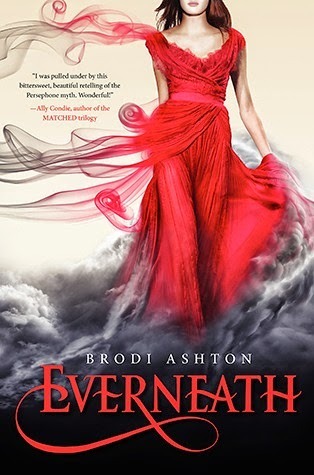
Starcrossed by Josephine Angelini
When shy sixteen-year-old Helen Hamilton starts having vivid dreams about three ancient, hideous women and suddenly tries to kill a new student at her Nantucket high school, she discovers that she is playing out some version of an old tale involving Helen of Troy, the Three Furies, and a mythic battle. Sequels: Dreamless, Goddess
Everneath by Brodi Ashton
Regretting her decision to forfeit her life on Earth to become an immortal on Everneath, a world between Earth and Hell, teenaged Nikki is given the chance to return to the Surface for six months, in this story loosely based on the "Hades and Persephone" myth. Sequels: Everbound, Evertrue

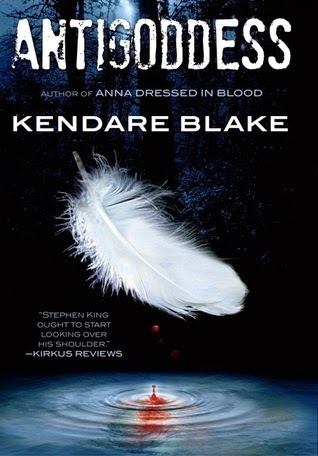
Of Poseidon by Anna Banks
Galen, prince of the Syrena, is sent to land to find a girl he's heard can communicate with fish. He finds Emma and after several encounters, including a deadly one with a shark, Galen becomes convinced Emma holds the key to his kingdom. Sequels: Of Triton, Of Neptune
Antigoddess by Kendare Blake
Athena and Hermes' search for the cause of their unexpected, life-threatening illnesses leads them to Cassandra, a former prophetess, who may be key to a war started by Hera and other Olympians who have become corrupt anti-gods determined to destroy their rivals. Sequels: Mortal Gods (October), Ungodly (2015)
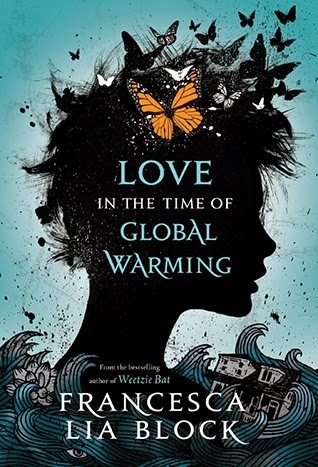
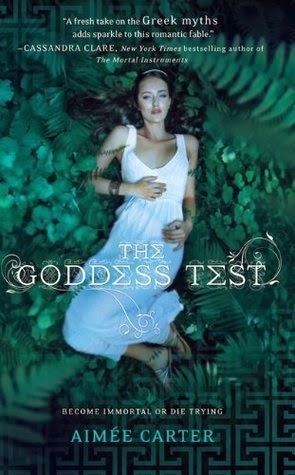
Love in the Time of Global Warming by Francesca Lia Block
After a devastating earthquake destroys the West Coast, causing seventeen-year-old Penelope to lose her home, her parents, and her ten-year-old brother, she navigates a dark world, holding hope and love in her hands and refusing to be defeated. [Based on the Odyssey] Sequel: The Island of Excess Love
The Goddess Test by Aimee Carter
Eden, Michigan, high school student Kate Winters strikes a bargain with Henry, Greek god of the underworld, if he'll cure her dying mother of cancer. The bargain she strikes with him is a grim one, but the full enormity of what she has undertaken--"live forever or die trying"--Is not revealed until it's too late to recant. Sequels: Goddess Interrupted, The Goddess Inheritance
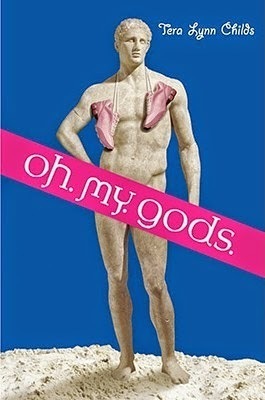
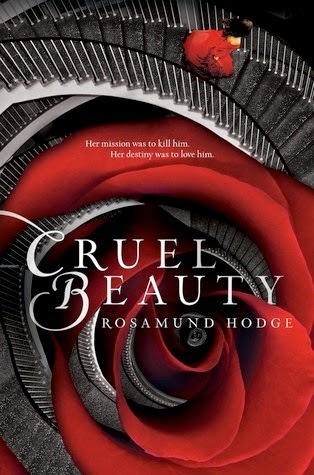
Oh. My. Gods. by Tera Lynn Childs
When her mother suddenly decides to marry a near-stranger, Phoebe, whose passion is running, soon finds herself living on a remote Greek island, completing her senior year at an ancient high school where the students and teachers are all descended from gods or goddesses. Sequel: Goddess Boot Camp
Cruel Beauty by Rosamund Hodge
Betrothed to the demon who rules her country and trained all her life to kill him, seventeen-year-old Nyx Triskelion must now fulfill her destiny and move to the castle to be his wife. [There are elements of a number of myths here, including Hades/Persephone and Pandora's box.] Kimberly's review
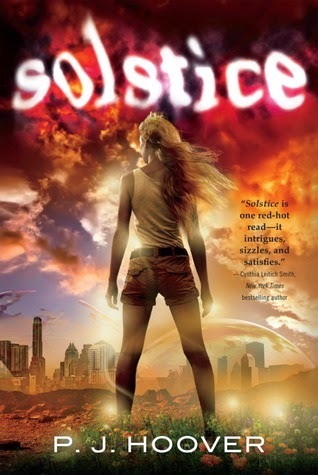
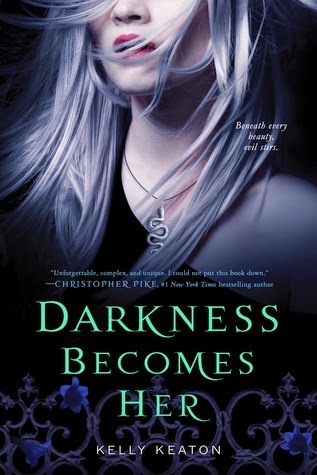
Solstice by P. J. Hoover
Eighteen-year-old Piper lives with her controlling mother amid a Global Heating Crisis, but when she gets her first taste of freedom she discovers a universe of gods and monsters where her true identity, kept secret from her birth, could make all the difference in the world.
Darkness Becomes Her by Kelly Keaton
In post-apocalyptic New Orleans, now a sanctuary for supernatural beings, a hardened teenager on the run searches for the truth about her monstrous heritage and discovers a curse that could ignite the ancient war between gods and monsters. Sequels: A Beautiful Evil, The Wicked Within
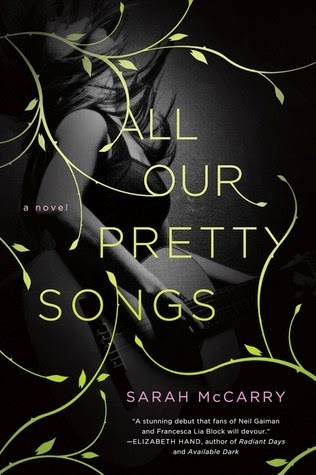
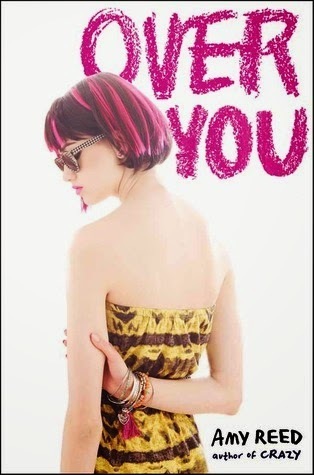
All Our Pretty Songs by Sarah McCarry
In the Pacific Northwest, the bond between two best friends is challenged when a mysterious and gifted musician comes between them and awakens an ancient evil. [Inspired by the Orpheus myth] Sequel: Dirty Wings, inspired by the Persephone/Hades myth
Over You by Amy Reed
A novel about two girls on the run from their problems, their pasts, and themselves. Max and Sadie are escaping to Nebraska, but they'll soon learn they can't escape the truth. [Inspired by a number of Greek myths presented as chapter introductions] Kelly's review
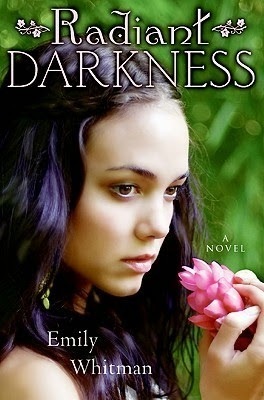
Radiant Darkness by Emily Whitman
Persephone runs off to the Underworld with Hades, with whom she has fallen in love, but when her mother Demeter threatens to destroy the earth to save her, Persephone finds a way to come back once a year, bringing spring.
Egyptian
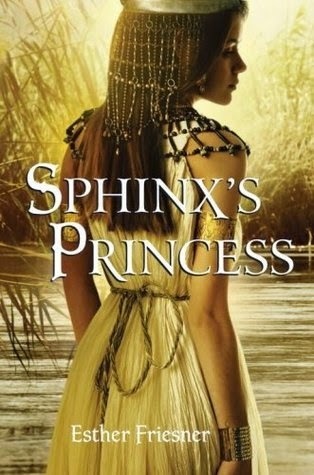
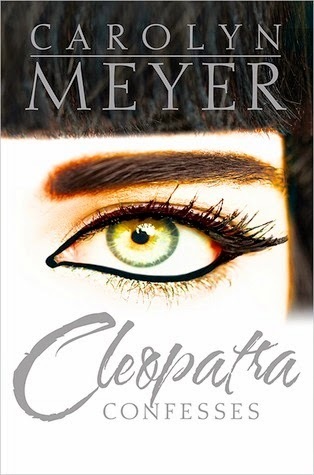
Sphinx's Princess by Esther Friesner
Although she is a dutiful daughter, Nefertiti's dancing abilities, remarkable beauty, and intelligence garner attention near and far, so much so that her family is summoned to the Egyptian royal court, where Nefertiti becomes a pawn in the power play of her scheming aunt, Queen Tiye. Sequel: Sphinx's Queen
Cleopatra Confesses by Carolyn Meyer
Princess Cleopatra, the third (and favorite) daughter of King Ptolemy XII, comes of age in ancient Egypt, accumulating power and discovering love.

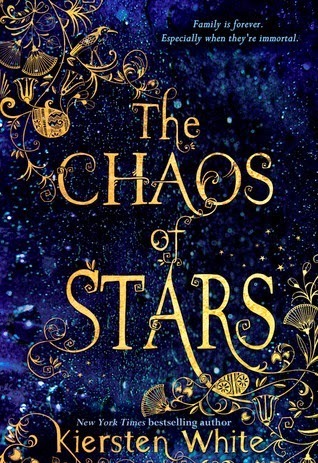
Cleopatra's Moon by Vicky Alvear Shecter
Cleopatra Selene, the only surviving daughter of Cleopatra and Marc Antony, recalls her life of pomp and splendor in Egypt and, after her parents' deaths, captivity and treachery in Rome.
The Chaos of Stars by Kiersten White
Sixteen-year-old Isadora, the mortal daughter of Isis and Osiris, is sick of being in the middle of family drama so she jumps at the chance to leave Egypt and start a new life in San Diego with her brother.
Norse

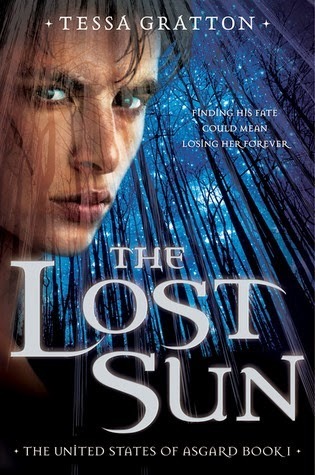
Stork by Wendy Delsol
After her parents' divorce, Katla and her mother move from Los Angeles to Norse Falls, Minnesota, where Kat immediately alienates two boys at her high school and, improbably, discovers a kinship with a mysterious group of elderly women--the Icelandic Stork Society--who "deliver souls." Sequels: Frost, Flock
The Lost Sun by Tessa Gratton
In an alternate U.S.A. (the United States of Asgard), Soren Bearskin, the son of an infamous beserker, and Astrid Glyn, daughter of a renowned seer, embark on a road trip to find Baldur, the missing god whose absence has caused panic throughout the country. Sequel: The Strange Maid
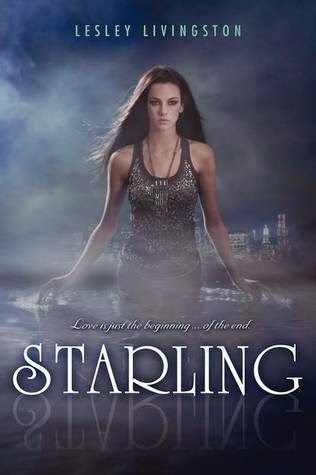
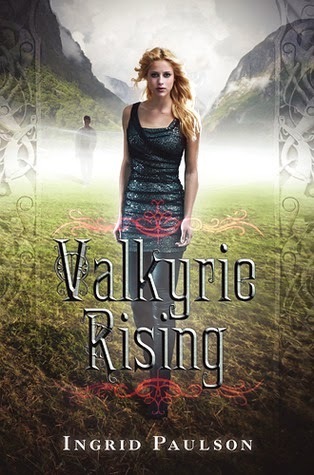
Starling by Lesley Livingston
Mason Starling, a champion fencer at Gosforth Academy, finds her school overrun with terrifying creatures after a mysterious, ferocious storm falls on Manhattan and the mysterious stranger who saves her life becomes her only ally as they work together to discover his past and learn of Mason's family's dark allegiance to ancient Norse gods. Sequels: Descendant, Transcendent
Valkyrie Rising by Ingrid Paulson
While visiting Norway, sixteen-year-old Ellie must step out of the shadow of her popular older brother, join forces with his infuriating best friend, and embrace her Valkyrie heritage to rescue teen boys kidnapped to join the undead army of the ancient god, Odin.
Asian
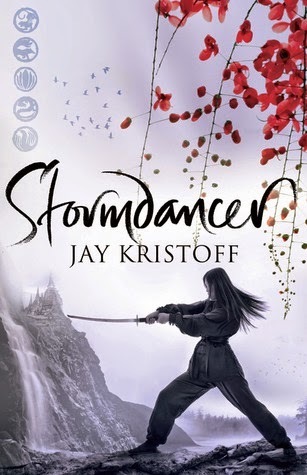
Ink by Amanda Sun (Japanese)
Stuck with her aunt in Shizuoka, Japan, Katie feels lost. When Katie meets aloof but gorgeous Tomohiro, the star of the school's kendo team, she is intrigued by him...and a little scared. His tough attitude seems meant to keep her at a distance, and when they're near each other, strange things happen. And unless Katie is seeing things, drawings come to life. Somehow Tomo is connected to the kami, powerful ancient beings who once ruled Japan--and as feelings develop between Katie and Tomo, things begin to spiral out of control. The wrong people are starting to ask questions, and if they discover the truth, no one will be safe. Sequel: Rain
Stormdancer by Jay Kristoff (Japanese)
In this dystopian steampunk fantasy set against a backdrop of feudal Japan, warrior Yukiko captures a supposedly extinct (but crippled) griffin for the Shogun, then learns -- after meeting secretive Kin and the rebel Kage cabal -- of the horrifying extent of the Shogun's crimes, both against her country and her family. Returning to the city, Yukiko is determined to make the Shogun pay -- but what can one girl and a flightless griffin do against the might of an empire? Sequels: Kinslayer, Endsinger (November)
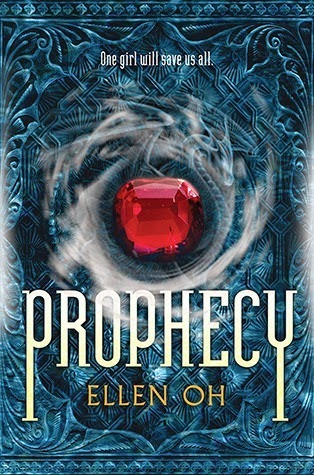

Prophecy by Ellen Oh (Korean)
A demon slayer, the only female warrior in the King's army, must battle demon soldiers, an evil shaman, and the Demon Lord to find the lost ruby of the Dragon King's prophecy and save her kingdom. Sequels: Warrior, King (2015) | Kimberly's review
Silver Phoenix by Cindy Pon (Chinese)
With her father long overdue from his journey and a lecherous merchant blackmailing her into marriage, seventeen-year-old Ai Ling becomes aware of a strange power within her as she goes in search of her parent. Sequel: Fury of the Phoenix
Other
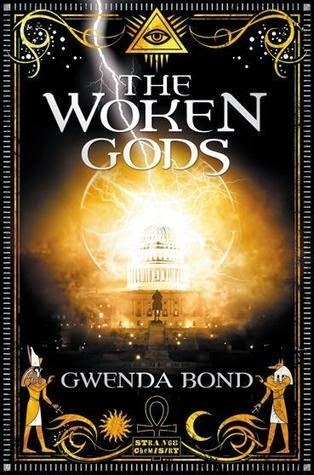
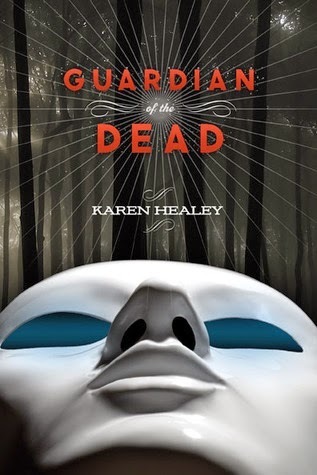
The Woken Gods by Gwenda Bond (multi-pantheon)
This morning, seventeen-year-old Kyra Locke was late for school. But that's not out of the ordinary in a transformed Washington, D.C., dominated by the embassies of divine pantheons and watched over by the mysterious Society of the Sun that governs mankind's relations with the gods. What is unusual is Kyra's encounter with two trickster gods on her way home, one offering a threat, and the other a warning.
Guardian of the Dead by Karen Healey (Maori)
Eighteen-year-old New Zealand boarding school student Ellie Spencer must use her rusty tae kwon do skills and new-found magic to try to stop a fairy-like race of creatures from Maori myth and legend that is plotting to kill millions of humans in order to regain their lost immortality.






 Related StoriesGet Genrefied: Climate Fiction (Cli-Fi)Get Genrefied: Historical FantasyGet Genrefied: Fairy Tale Re-tellings
Related StoriesGet Genrefied: Climate Fiction (Cli-Fi)Get Genrefied: Historical FantasyGet Genrefied: Fairy Tale Re-tellings
In this guide, we use the word "mythology" to mean a collection of traditional or legendary stories, often involving gods and goddesses. Usually, myths are created to explain phenomena that can't be explained using natural or scientific means (how the earth and humanity came to be, for example). We focus mainly on ancient mythology here: the religious and spiritual beliefs of peoples long-dead that are generally considered untrue - therefore mythical - by modern humans. That said, it's certainly possible to call more modern religious or spiritual beliefs "mythical" - and some people do. I took a class in college where the professor stated the only difference between mythology and modern religion is that no one believes in the myths anymore. (Not all of you may agree with this, but it's interesting to think about.)
This is important to consider when choosing the right term for a particular book inspired by a traditional story - is the story a myth or a religious parable? The word "myth" is heavily loaded and implies untruth. This might be more of a challenge for Western librarians who come across non-Western stories featuring gods and goddesses about which they know very little. (All the more reason to become acquainted with the beliefs of all peoples across the world and know which beliefs are mythical and which remain a part of the living religion.)
Mythology is ripe for re-imaginings since it's already full of action, war, love, and betrayal - the stuff of any good story. It's a perennially popular topic for kids and teens and will often lead them to check out some nonfiction on their favorite gods, goddesses, or creatures. (Edith Hamilton's Mythology is the classic work, and younger kids at my library have loved the Mythlopedia books from Scholastic.) Greek mythology reigns; this was true even before Percy Jackson conquered the shelves. Still, the success of Rick Riordan's novels has given rise to mythology-inspired stories from many different pantheons, including Norse, Japanese, and Korean.
Before we get to the booklist, here are a few resources of interest:
The Mythopoeic Society gives out an annual award for books in the fields of myth and fantasy. They have an adult category as well as a children's (including YA) category. You won't find a lot of Greek or Egyptian mythology-inspired winners here. Instead, the society focuses on recognizing books that best exemplify the spirit of the Inklings (a group of Oxford academics and writers which included J. R. R. Tolkien and C. S. Lewis). The mythology recognized in the Mythopoeic Award is usually that of the writers' own making, meaning honored books will often have interesting, detailed world-building. They also honor nonfiction work in the field - in Inklings studies as well as myth & fantasy studies. Recent winners and finalists include Vessel by Sarah Beth Durst, The Queen's Thief series by Megan Whalen Turner, and Graceling by Kristin Cashore. The Encyclopedia Mythica is an online treasure trove of myths and folklore from all parts of the world. It currently has over 7,000 entries, plus a bestiary, image gallery, and genealogical tables. Rick Riordan's website has a bunch of information about mythology, including links to further resources: Explore Greek Mythology and Explore Egyptian Mythology Epic Reads' chart of 162 YA Retellings is worth revisiting since they include mythology. They even break down Greco-Roman mythology by myth - Hades/Persephone, Cupid/Psyche, Helen of Troy, and everything else. This post from Brittany at the Book Addicts' Guide is about a project where participating bloggers wrote about various classics retold during September of 2013. Brittany was in charge of mythology, so her introductory post features a lot of great examples. As part of that project, Molly Wetta at Wrapped Up in Books wrote about Norse mythology re-tellings.
A lot of mythology-inspired stories being published today are more middle grade than YA, probably due to Percy Jackson's influence (think of Loki's Wolves or The Savage Fortress ). Riordan's stories have good crossover appeal to teens, though, and I wouldn't be surprised if other middle grade mythology stories do as well. That said, there are plenty of solidly teen stories about mythology out there, and we've compiled a list for you below. They're mainly broken down by pantheon, though those with only one or two books have been combined by region.
If you know of any others, particularly realistic or Asian or African-inspired, please let us know in the comments.
Greek & Roman


Starcrossed by Josephine Angelini
When shy sixteen-year-old Helen Hamilton starts having vivid dreams about three ancient, hideous women and suddenly tries to kill a new student at her Nantucket high school, she discovers that she is playing out some version of an old tale involving Helen of Troy, the Three Furies, and a mythic battle. Sequels: Dreamless, Goddess
Everneath by Brodi Ashton
Regretting her decision to forfeit her life on Earth to become an immortal on Everneath, a world between Earth and Hell, teenaged Nikki is given the chance to return to the Surface for six months, in this story loosely based on the "Hades and Persephone" myth. Sequels: Everbound, Evertrue


Of Poseidon by Anna Banks
Galen, prince of the Syrena, is sent to land to find a girl he's heard can communicate with fish. He finds Emma and after several encounters, including a deadly one with a shark, Galen becomes convinced Emma holds the key to his kingdom. Sequels: Of Triton, Of Neptune
Antigoddess by Kendare Blake
Athena and Hermes' search for the cause of their unexpected, life-threatening illnesses leads them to Cassandra, a former prophetess, who may be key to a war started by Hera and other Olympians who have become corrupt anti-gods determined to destroy their rivals. Sequels: Mortal Gods (October), Ungodly (2015)


Love in the Time of Global Warming by Francesca Lia Block
After a devastating earthquake destroys the West Coast, causing seventeen-year-old Penelope to lose her home, her parents, and her ten-year-old brother, she navigates a dark world, holding hope and love in her hands and refusing to be defeated. [Based on the Odyssey] Sequel: The Island of Excess Love
The Goddess Test by Aimee Carter
Eden, Michigan, high school student Kate Winters strikes a bargain with Henry, Greek god of the underworld, if he'll cure her dying mother of cancer. The bargain she strikes with him is a grim one, but the full enormity of what she has undertaken--"live forever or die trying"--Is not revealed until it's too late to recant. Sequels: Goddess Interrupted, The Goddess Inheritance


Oh. My. Gods. by Tera Lynn Childs
When her mother suddenly decides to marry a near-stranger, Phoebe, whose passion is running, soon finds herself living on a remote Greek island, completing her senior year at an ancient high school where the students and teachers are all descended from gods or goddesses. Sequel: Goddess Boot Camp
Cruel Beauty by Rosamund Hodge
Betrothed to the demon who rules her country and trained all her life to kill him, seventeen-year-old Nyx Triskelion must now fulfill her destiny and move to the castle to be his wife. [There are elements of a number of myths here, including Hades/Persephone and Pandora's box.] Kimberly's review


Solstice by P. J. Hoover
Eighteen-year-old Piper lives with her controlling mother amid a Global Heating Crisis, but when she gets her first taste of freedom she discovers a universe of gods and monsters where her true identity, kept secret from her birth, could make all the difference in the world.
Darkness Becomes Her by Kelly Keaton
In post-apocalyptic New Orleans, now a sanctuary for supernatural beings, a hardened teenager on the run searches for the truth about her monstrous heritage and discovers a curse that could ignite the ancient war between gods and monsters. Sequels: A Beautiful Evil, The Wicked Within


All Our Pretty Songs by Sarah McCarry
In the Pacific Northwest, the bond between two best friends is challenged when a mysterious and gifted musician comes between them and awakens an ancient evil. [Inspired by the Orpheus myth] Sequel: Dirty Wings, inspired by the Persephone/Hades myth
Over You by Amy Reed
A novel about two girls on the run from their problems, their pasts, and themselves. Max and Sadie are escaping to Nebraska, but they'll soon learn they can't escape the truth. [Inspired by a number of Greek myths presented as chapter introductions] Kelly's review

Radiant Darkness by Emily Whitman
Persephone runs off to the Underworld with Hades, with whom she has fallen in love, but when her mother Demeter threatens to destroy the earth to save her, Persephone finds a way to come back once a year, bringing spring.
Egyptian


Sphinx's Princess by Esther Friesner
Although she is a dutiful daughter, Nefertiti's dancing abilities, remarkable beauty, and intelligence garner attention near and far, so much so that her family is summoned to the Egyptian royal court, where Nefertiti becomes a pawn in the power play of her scheming aunt, Queen Tiye. Sequel: Sphinx's Queen
Cleopatra Confesses by Carolyn Meyer
Princess Cleopatra, the third (and favorite) daughter of King Ptolemy XII, comes of age in ancient Egypt, accumulating power and discovering love.


Cleopatra's Moon by Vicky Alvear Shecter
Cleopatra Selene, the only surviving daughter of Cleopatra and Marc Antony, recalls her life of pomp and splendor in Egypt and, after her parents' deaths, captivity and treachery in Rome.
The Chaos of Stars by Kiersten White
Sixteen-year-old Isadora, the mortal daughter of Isis and Osiris, is sick of being in the middle of family drama so she jumps at the chance to leave Egypt and start a new life in San Diego with her brother.
Norse


Stork by Wendy Delsol
After her parents' divorce, Katla and her mother move from Los Angeles to Norse Falls, Minnesota, where Kat immediately alienates two boys at her high school and, improbably, discovers a kinship with a mysterious group of elderly women--the Icelandic Stork Society--who "deliver souls." Sequels: Frost, Flock
The Lost Sun by Tessa Gratton
In an alternate U.S.A. (the United States of Asgard), Soren Bearskin, the son of an infamous beserker, and Astrid Glyn, daughter of a renowned seer, embark on a road trip to find Baldur, the missing god whose absence has caused panic throughout the country. Sequel: The Strange Maid


Starling by Lesley Livingston
Mason Starling, a champion fencer at Gosforth Academy, finds her school overrun with terrifying creatures after a mysterious, ferocious storm falls on Manhattan and the mysterious stranger who saves her life becomes her only ally as they work together to discover his past and learn of Mason's family's dark allegiance to ancient Norse gods. Sequels: Descendant, Transcendent
Valkyrie Rising by Ingrid Paulson
While visiting Norway, sixteen-year-old Ellie must step out of the shadow of her popular older brother, join forces with his infuriating best friend, and embrace her Valkyrie heritage to rescue teen boys kidnapped to join the undead army of the ancient god, Odin.
Asian


Ink by Amanda Sun (Japanese)
Stuck with her aunt in Shizuoka, Japan, Katie feels lost. When Katie meets aloof but gorgeous Tomohiro, the star of the school's kendo team, she is intrigued by him...and a little scared. His tough attitude seems meant to keep her at a distance, and when they're near each other, strange things happen. And unless Katie is seeing things, drawings come to life. Somehow Tomo is connected to the kami, powerful ancient beings who once ruled Japan--and as feelings develop between Katie and Tomo, things begin to spiral out of control. The wrong people are starting to ask questions, and if they discover the truth, no one will be safe. Sequel: Rain
Stormdancer by Jay Kristoff (Japanese)
In this dystopian steampunk fantasy set against a backdrop of feudal Japan, warrior Yukiko captures a supposedly extinct (but crippled) griffin for the Shogun, then learns -- after meeting secretive Kin and the rebel Kage cabal -- of the horrifying extent of the Shogun's crimes, both against her country and her family. Returning to the city, Yukiko is determined to make the Shogun pay -- but what can one girl and a flightless griffin do against the might of an empire? Sequels: Kinslayer, Endsinger (November)


Prophecy by Ellen Oh (Korean)
A demon slayer, the only female warrior in the King's army, must battle demon soldiers, an evil shaman, and the Demon Lord to find the lost ruby of the Dragon King's prophecy and save her kingdom. Sequels: Warrior, King (2015) | Kimberly's review
Silver Phoenix by Cindy Pon (Chinese)
With her father long overdue from his journey and a lecherous merchant blackmailing her into marriage, seventeen-year-old Ai Ling becomes aware of a strange power within her as she goes in search of her parent. Sequel: Fury of the Phoenix
Other


The Woken Gods by Gwenda Bond (multi-pantheon)
This morning, seventeen-year-old Kyra Locke was late for school. But that's not out of the ordinary in a transformed Washington, D.C., dominated by the embassies of divine pantheons and watched over by the mysterious Society of the Sun that governs mankind's relations with the gods. What is unusual is Kyra's encounter with two trickster gods on her way home, one offering a threat, and the other a warning.
Guardian of the Dead by Karen Healey (Maori)
Eighteen-year-old New Zealand boarding school student Ellie Spencer must use her rusty tae kwon do skills and new-found magic to try to stop a fairy-like race of creatures from Maori myth and legend that is plotting to kill millions of humans in order to regain their lost immortality.







 Related StoriesGet Genrefied: Climate Fiction (Cli-Fi)Get Genrefied: Historical FantasyGet Genrefied: Fairy Tale Re-tellings
Related StoriesGet Genrefied: Climate Fiction (Cli-Fi)Get Genrefied: Historical FantasyGet Genrefied: Fairy Tale Re-tellings
Published on September 02, 2014 22:00
September 1, 2014
Palace of Spies by Sarah Zettel
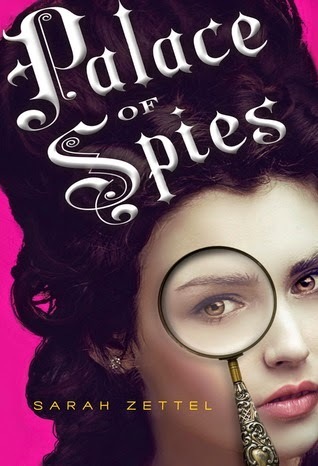 I love historical mysteries set in palaces, particularly when the sleuth is a girl spy masquerading as a servant or lady in waiting. I feel like there are enough books fitting this particular mold out now that it can almost be considered its own subgenre within YA: historical female spy palace mysteries? Over the weekend, I read Sarah Zettel's excellent
Palace of Spies
, which kicks off her series of the same name. I read these sorts of books for the palace intrigue, the historical details of court life, and the intelligence of the amateur sleuth; Zettel's book did not disappoint in any of these aspects.
I love historical mysteries set in palaces, particularly when the sleuth is a girl spy masquerading as a servant or lady in waiting. I feel like there are enough books fitting this particular mold out now that it can almost be considered its own subgenre within YA: historical female spy palace mysteries? Over the weekend, I read Sarah Zettel's excellent
Palace of Spies
, which kicks off her series of the same name. I read these sorts of books for the palace intrigue, the historical details of court life, and the intelligence of the amateur sleuth; Zettel's book did not disappoint in any of these aspects.One of the hallmarks of these stories is the teenage sleuth thrown into a life of espionage through desperation or blackmail - it doesn't usually happen by choice. Such is the case with our protagonist, Peggy Fitzroy, an orphan who decided to refuse marriage to the wealthy jerk her rich uncle had picked our for her. Kicked out of said uncle's home and with nowhere to turn, Peggy decides to accept an offer from the dubiously-named Mr. Tinderflint. He convinces her to pose as Lady Francesca Wallingham, who was very recently a lady in waiting to Princess Catherine (wife of George, the Prince of Wales, who would go on to be George II) - until her unfortunate death of a fever several weeks ago.
As Peggy bears more than a passing resemblance to Francesca, the deception isn't difficult to pull off. She's instated at Hampton Court Palace with no one the wiser, instructed to observe and report back. What precisely she is to look for isn't deemed knowledge she needs to know, though she is told she must pay careful attention to the games of cards that the noble men and women entertain themselves with nightly.
Peggy is a smart girl. It doesn't take her long to realize that not only is Mr. Tinderflint hiding something from her, but so is nearly everyone else at court. But the truly alarming realization is that Francesca did not die of a fever; she was murdered. It only follows that the murderer may come after Peggy next, thinking to finish the job.
As with any good palace mystery, there are a lot of threads to the story. The main mystery involves a Jacobite plot to instate the Stuart King James II to the throne of England, removing the Hanover King George I. It's up to the reader (and Peggy) to puzzle out which subplots are integral to this central mystery and which are distractions (but interesting distractions nonetheless). Mixed up in this is the mystery of Peggy's own past - her mother may have been a spy herself, and her father left them when Peggy was a young child. And of course, there's plenty of court gossip to keep the reader entertained as well.
Peggy's voice makes this an above average mystery. She's sharply observant and learns quickly, making her ideally suited to her deception. She's got a bit of a wry sense of humor, too, and sometimes lets her desire to one-up her court rivals get her into hot water. Watching Peggy try to puzzle out Francesca's life without letting Francesca's acquaintances catch on brings its own share of amusement, too, particularly when Peggy is greeted by what appears to be Francesca's secret paramour in her bedchamber.
Zettel's writing is confident and the story is well-plotted. Mysteries often hinge strongly on the final reveal at the end, and Palace of Spies has a great one, speaking to the way society underestimates the will and intelligence of teenage girls (both in the 1700s and today). Like all good mystery series, it also leaves a few questions about Peggy's family's past unanswered, giving Zettel fodder for future installments.
Hand this to readers who have enjoyed similar books in this historical female spy palace mystery subgenre (I'm gonna go with it) like Jennifer McGowan's Maid of Secrets, Michaela MacColl's Prisoners in the Palace , or Y. S. Lee's The Traitor in the Tunnel . It's also a great choice for readers interested in learning more about this period in England's history - there aren't many books that tackle the early 18th century and I know Jacobitism would fascinate many teen historical fiction junkies.







 Related StoriesTomboy by Liz PrinceSuicide and Depression in YA: A Discussion and Book ListSisters by Raina Telgemeier
Related StoriesTomboy by Liz PrinceSuicide and Depression in YA: A Discussion and Book ListSisters by Raina Telgemeier
Published on September 01, 2014 22:00
August 31, 2014
Giveaway: IT HAPPENS
Happy Labo(u)r Day!
Since today kicks off my very favorite month of the year, I thought it high time to do another giveaway of my book, It Happens.

This giveaway is open worldwide. I'll pick one winner sometime later this month.
Loading...







Since today kicks off my very favorite month of the year, I thought it high time to do another giveaway of my book, It Happens.

This giveaway is open worldwide. I'll pick one winner sometime later this month.
Loading...








Published on August 31, 2014 22:00
August 28, 2014
This Week at Book Riot
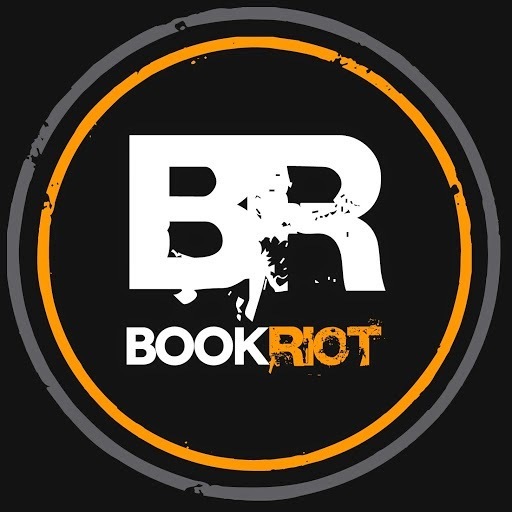
Here's what happened over at Book Riot this week . . .
3 On A YA Theme: I talked about the YA books that were turned into films which you can watch on Netflix streaming (if you're in the US). I'll be back next week with three-ish additional titles.







 Related StoriesThis Week at Book Riot
Related StoriesThis Week at Book Riot
Published on August 28, 2014 22:00
August 27, 2014
Suicide and Depression in YA: A Discussion and Book List
"So I guess that’s why it doesn’t feel like talking about my mental health is tantamount to airing my dirty laundry. Instead, to extend the metaphor, it feels like I’m just hanging my regular old laundry out to dry. And I’m hanging it somewhere visible, like a laundry line strung up between two buildings or something. And everything – absolutely everything – that I wear is on that line. My cute little sundresses are there, as well as my jeans, my shorts, and a variety of tops. But my underwear is also hung up there – even the big old comfy granny panties – and my bras and thongs are there too, waving like flags in the wind. Because we all wear underwear. Everyone knows that people wear underwear. Everyone knows that underwear needs to be washed and dried before you wear it again. So why should it be embarrassing to hang it outside?Everyone knows that mental illness exists; everyone knows the devastating effect that it can have, both on the people suffering from it and their friends and families. This is not new information – it’s something that we’ve known forever and ever. But the hush-hush way we’ve developed of discussing it and dealing with it clearly aren’t working. So let’s finally start talking about it, because that’s the only chance that we have of beating it." -- from Airing My Dirty Laundry by Anne TheriaultThe two final paragraphs from this blog post really resonated with me last week when I read them. Everyone knows mental illness exists, everyone knows that the effects of mental illness can be terrible, and yet, people don't want to talk about it. It's not a pleasant topic, but it's one that needs to be addressed and needs to be approached with more honesty and compassion.
Over the last year, depression and suicide have seen more time in the spotlight. Ned Vizzini's suicide, followed by Robin Williams's -- and the near 40,000 suicides that happen per year in the US -- make it clear we need to be talking about this more. Suicide is the 10th leading cause of death in America. While depression is not indicative of suicide, the two are linked together in a way that makes talking about them in tandem make sense.
There's a mythology that surrounds depression and suicide, particularly when it comes to creative types. It's a mythology that's exceptionally destructive and belittling to all those who suffer from mental illness, and it's this: that that anguish is what causes the best work to happen.
Following Williams's death, I read the comment far too often that creative people are most likely to suffer because that suffering is where art is born. It tends to be the complete opposite. Creative types don't see depression as what drives them. The best work isn't made when they're down, but rather, when artists are up. When down and the work isn't coming together, it actually further fuels the depression/anxiety cycle, making it even more difficult to create and engage in a healthy way. Myra McEntire and Stephanie Perkins have both written about this and the ways that depression has impacted not just their careers, but their personal lives, as well.
Part of why people believe and engage in this myth telling is because it's easier than trying to make sense of an illness that often doesn't appear to have a root cause. How could someone talented or successful be depressed? How can someone who seems to have it all together find it difficult to get out of bed, to take a shower, to want to talk with the people who love and care about them? When people choose to look at an illness through that set of lenses, they blame the victim, rather than educate themselves on the disease.
When we do that, we further stigmatize those who are suffering from depression, making them less likely to seek treatment or practice necessary self-care and preservation.
One of the most memorable moments of my career in librarianship came at the very end. I've worked with teens for many years, and one of the reasons I like working with them and advocating for them is because they're far more likely to be open minded and receptive to ideas and tough discussions than adults can be. But nothing really got to me and emphasized the importance of having resources available -- and being a resource myself through listening, advocating, and being in tune with the array of challenges teens face -- than when a teen got up during one of our programs and delivered a piece of slam poetry about a friend.
She'd been quiet during the event. Her cousin had been urging her to get up in front of the (small) group of mostly adults and some teens who'd come to the program. She'd written something while listening to other performances, and her cousin really hoped she'd share.
After she performed the piece, she stood at the front and accepted the audience applause shyly. But she didn't leave the front of the room. She stood there, as if she needed to say more or explain what her piece was about. With more encouragement from her family, she explained that her friend had committed suicide just days ago, and the piece was a tribute to her friend.
The room went silent. People didn't try to distract themselves. They sat. They'd heard exactly what she said and took it in, thinking about not just what that meant on a grand level, but what it meant right here and right now for a young teen girl to get up and express her feelings about the situation while the wounds were so fresh. What do you do with that? What can you do with that?
When the event was over, there wasn't a single person who didn't approach her, offering kind words or a hug. Many had said something after they'd collected themselves, encouraging her never to stop working through her feelings with words like she'd just done. And that she'd done so openly.
I put together a display in the teen area the next day of books about "tough issues": realistic fiction tackling mental illness and suicide. I knew if one girl who was hurting, others were, too. The books did not last long on the display. People were looking for these stories. And as I saw again on social media in the wake of Williams's suicide, people were asking for books about depression and suicide. Books and art, of course, are ways into talking about mental illness and suicide, as they allow a space for thinking, for considering, and for making sense of them privately.
That's why hearing a teen girl sharing a poem about it left such an impact. She shared.
With that, here's a thick list of YA titles that explore depression and/or suicide. Again, these aren't inextricably linked: one can be depressed and never suicidal, while one can be suicidal and it's not borne of depression. Likewise, depression is often linked to other mental illness, but I've tried to focus on those stories where depression is the primary force. I've limited myself to realistic fiction, but feel free to offer up additional titles within any genre of YA in the comments. These stories focus on depression and/or suicide from a wide array of perspectives.
All descriptions are from WorldCat. A handful of additional titles, which I've not included on my list, can be found at Disability in KidLit.
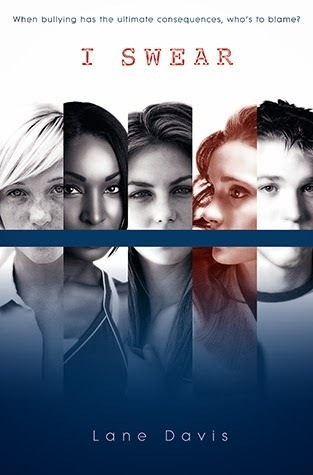

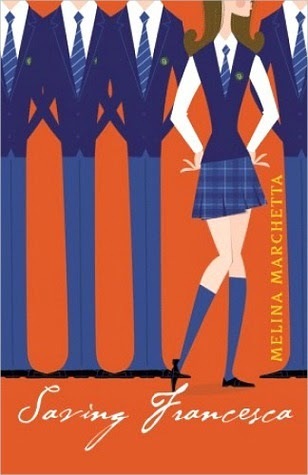
I Swear by Lane Davis: After Leslie Gatlin kills herself, her bullies reflect on how things got so far.
Thirteen Reasons Why by Jay Asher: When high school student Clay Jenkins receives a box in the mail containing thirteen cassette tapes recorded by his classmate Hannah, who committed suicide, he spends a bewildering and heartbreaking night crisscrossing their town, listening to Hannah's voice recounting the events leading up to her death.
Saving Francesca by Melina Marchetta: Sixteen-year-old Francesca could use her outspoken mother's help with the problems of being one of a handful of girls at a parochial school that has just turned co-ed, but her mother has suddenly become severely depressed.
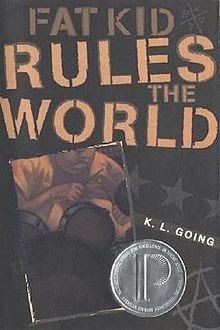


Fat Kid Rules The World by K. L. Going: Seventeen-year-old Troy, depressed, suicidal, and weighing nearly 300 pounds, gets a new perspective on life when a homeless teenager who is a genius on guitar wants Troy to be the drummer in his rock band.
Hold Still by Nina LaCour: Ingrid didn't leave a note. Three months after her best friend's suicide, Caitlin finds what she left instead: a journal, hidden under Caitlin's bed.
Impulse by Ellen Hopkins: Three teens who meet at Reno, Nevada's Aspen Springs mental hospital after each has attempted suicide connect with each other in a way they never have with their parents or anyone else in their lives.
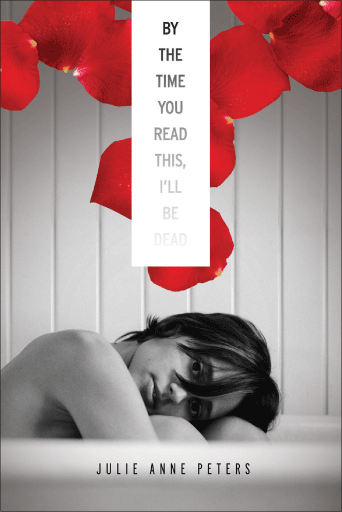
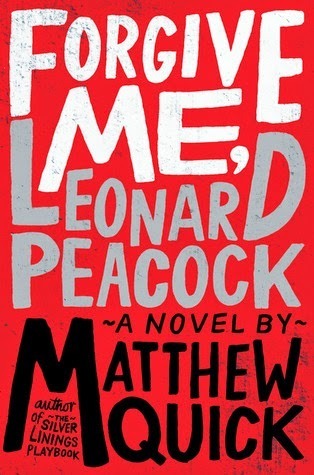

By The Time You Read This, I'll Be Dead by Julie Anne Peters: High school student Daelyn Rice, who's been bullied throughout her school career and has more than once attempted suicide, again makes plans to kill herself, in spite of the persistent attempts of an unusual boy to draw her out.
Forgive Me, Leonard Peacock by Matthew Quick: A day in the life of a suicidal teen boy saying good-bye to the four people who matter most to him.
This Song Will Save Your Life by Leila Sales: Nearly a year after a failed suicide attempt, sixteen-year-old Elise discovers that she has the passion, and the talent, to be a disc jockey.


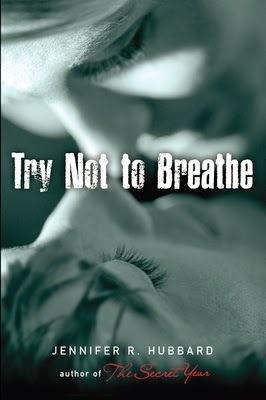
The Death of Jayson Porter by Jaime Adoff: In the Florida projects, sixteen-year-old Jayson struggles with the harsh realities of his life which include an abusive mother, a drug-addicted father, and not fitting in at his predominately white school, and bring him to the brink of suicide.
Survive by Alex Morel: A troubled girl is stranded in an arctic winter terrain after a plane crash and must fight for survival with the only other boy left alive.
Try Not to Breathe by Jennifer R. Hubbard: The summer Ryan is released from a mental hospital following his suicide attempt, he meets Nicki, who gets him to share his darkest secrets while hiding secrets of her own.

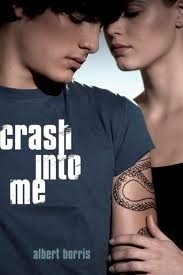

And We Stay by Jenny Hubbard: Sent to an Amherst, Massachusetts, boarding school after her ex-boyfriend shoots himself, seventeen-year-old Emily expresses herself through poetry as she relives their relationship, copes with her guilt, and begins to heal.
Crash Into Me by Albert Borris: Four suicidal teenagers go on a "celebrity suicide road trip," visiting the graves of famous people who have killed themselves, with the intention of ending their lives in Death Valley, California.
Glimpse by Carol Lynch Williams: Living with their mother who earns money as a prostitute, two sisters take care of each other and when the older one attempts suicide, the younger one tries to uncover the reason.
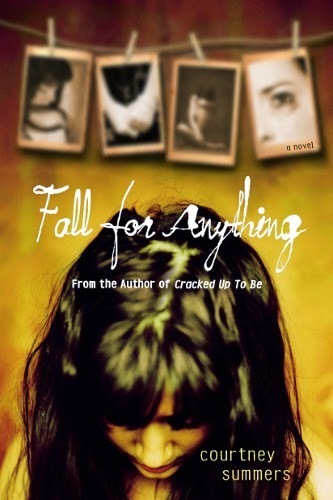
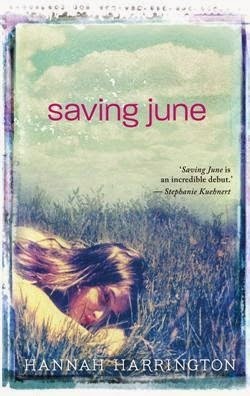
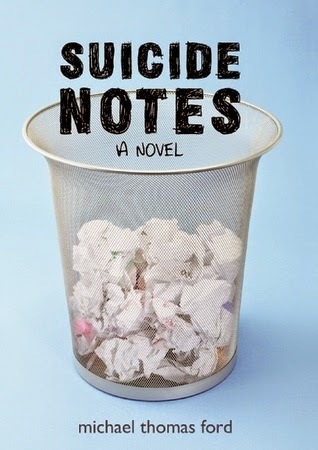
Fall For Anything by Courtney Summers: As she searches for clues that would explain the suicide of her successful photographer father, Eddie Reeves meets the strangely compelling Culler Evans who seems to know a great deal about her father and could hold the key to the mystery surrounding his death.
Saving June by Hannah Harrington: After her sister's suicide, Harper Scott takes off for California with her best friend Laney to scatter her sister's ashes in the Pacific Ocean.
Suicide Notes by Michael Thomas Ford: Brimming with sarcasm, fifteen-year-old Jeff describes his stay in a psychiatric ward after attempting to commit suicide.
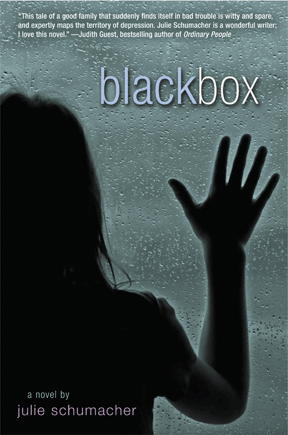
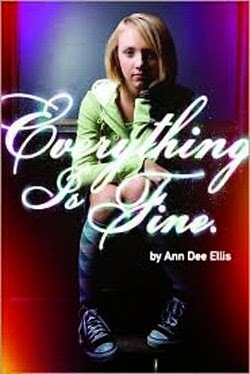

Blackbox by Julie Schumacher: When Dora, Elena's older sister, is diagnosed with depression and has to be admitted to the hospital, Elena can't seem to make sense of their lives anymore. At school, the only people who acknowledge Elena are Dora's friends and Jimmy Zenk--who failed at least one grade and wears black every day of the week. And at home, Elena's parents keep arguing with each other. Elena will do anything to help her sister get better and get their lives back to normal--even when the responsibility becomes too much to bear.
Everything Is Fine by Ann Dee Ellis: When her father leaves for a job out of town, Mazzy is left at home to try to cope with her mother, who has been severely depressed since the death of Mazzy's baby sister.
Silhouetted By The Blue by Traci L. Jones: After the death of her mother in an automobile accident, seventh-grader Serena, who has gotten the lead in her middle school play, is left to handle the day-to-day challenges of caring for herself and her younger brother when their father cannot pull himself out of his depression.



Drowning Instinct by Ilsa J. Bick: An emotionally damaged sixteen-year-old girl begins a relationship with a deeply troubled older man.
Get Well Soon by Julie Halpern: When her parents confine her to a mental hospital, an overweight teenaged girl, who suffers from panic attacks, describes her experiences in a series of letters to a friend.
Wild Awake by Hilary T. Smith: The discovery of a startling family secret leads seventeen-year-old Kiri Byrd from a protected and naive life into a summer of mental illness, first love, and profound self-discovery. *Read Hilary's guest post on mental illness in YA fiction, too, while you're at it.

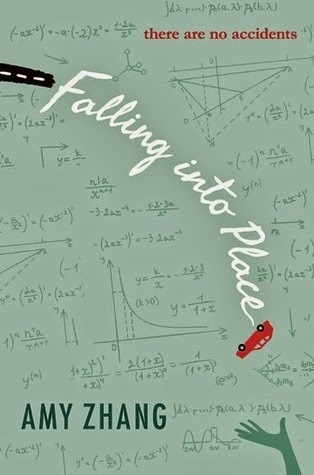
Crazy by Amy Reed: Connor and Izzy, two teens who met at a summer art camp in the Pacific Northwest where they were counselors, share a series of emails in which they confide in one another, eventually causing Connor to become worried when he realizes that Izzy's emotional highs and lows are too extreme. This book deals with bipolar disorder.
Falling Into Place by Amy Zhang (September 9): One cold fall day, high school junior Liz Emerson steers her car into a tree. This haunting and heartbreaking story is told by a surprising and unexpected narrator and unfolds in nonlinear flashbacks even as Liz's friends, foes, and family gather at the hospital and Liz clings to life.







 Related StoriesTomboy by Liz PrinceAugust Debut YA NovelsFemale Sexuality in YA Fiction: A Look at the Landscape
Related StoriesTomboy by Liz PrinceAugust Debut YA NovelsFemale Sexuality in YA Fiction: A Look at the Landscape
Over the last year, depression and suicide have seen more time in the spotlight. Ned Vizzini's suicide, followed by Robin Williams's -- and the near 40,000 suicides that happen per year in the US -- make it clear we need to be talking about this more. Suicide is the 10th leading cause of death in America. While depression is not indicative of suicide, the two are linked together in a way that makes talking about them in tandem make sense.
There's a mythology that surrounds depression and suicide, particularly when it comes to creative types. It's a mythology that's exceptionally destructive and belittling to all those who suffer from mental illness, and it's this: that that anguish is what causes the best work to happen.
Following Williams's death, I read the comment far too often that creative people are most likely to suffer because that suffering is where art is born. It tends to be the complete opposite. Creative types don't see depression as what drives them. The best work isn't made when they're down, but rather, when artists are up. When down and the work isn't coming together, it actually further fuels the depression/anxiety cycle, making it even more difficult to create and engage in a healthy way. Myra McEntire and Stephanie Perkins have both written about this and the ways that depression has impacted not just their careers, but their personal lives, as well.
Part of why people believe and engage in this myth telling is because it's easier than trying to make sense of an illness that often doesn't appear to have a root cause. How could someone talented or successful be depressed? How can someone who seems to have it all together find it difficult to get out of bed, to take a shower, to want to talk with the people who love and care about them? When people choose to look at an illness through that set of lenses, they blame the victim, rather than educate themselves on the disease.
When we do that, we further stigmatize those who are suffering from depression, making them less likely to seek treatment or practice necessary self-care and preservation.
One of the most memorable moments of my career in librarianship came at the very end. I've worked with teens for many years, and one of the reasons I like working with them and advocating for them is because they're far more likely to be open minded and receptive to ideas and tough discussions than adults can be. But nothing really got to me and emphasized the importance of having resources available -- and being a resource myself through listening, advocating, and being in tune with the array of challenges teens face -- than when a teen got up during one of our programs and delivered a piece of slam poetry about a friend.
She'd been quiet during the event. Her cousin had been urging her to get up in front of the (small) group of mostly adults and some teens who'd come to the program. She'd written something while listening to other performances, and her cousin really hoped she'd share.
After she performed the piece, she stood at the front and accepted the audience applause shyly. But she didn't leave the front of the room. She stood there, as if she needed to say more or explain what her piece was about. With more encouragement from her family, she explained that her friend had committed suicide just days ago, and the piece was a tribute to her friend.
The room went silent. People didn't try to distract themselves. They sat. They'd heard exactly what she said and took it in, thinking about not just what that meant on a grand level, but what it meant right here and right now for a young teen girl to get up and express her feelings about the situation while the wounds were so fresh. What do you do with that? What can you do with that?
When the event was over, there wasn't a single person who didn't approach her, offering kind words or a hug. Many had said something after they'd collected themselves, encouraging her never to stop working through her feelings with words like she'd just done. And that she'd done so openly.
I put together a display in the teen area the next day of books about "tough issues": realistic fiction tackling mental illness and suicide. I knew if one girl who was hurting, others were, too. The books did not last long on the display. People were looking for these stories. And as I saw again on social media in the wake of Williams's suicide, people were asking for books about depression and suicide. Books and art, of course, are ways into talking about mental illness and suicide, as they allow a space for thinking, for considering, and for making sense of them privately.
That's why hearing a teen girl sharing a poem about it left such an impact. She shared.
With that, here's a thick list of YA titles that explore depression and/or suicide. Again, these aren't inextricably linked: one can be depressed and never suicidal, while one can be suicidal and it's not borne of depression. Likewise, depression is often linked to other mental illness, but I've tried to focus on those stories where depression is the primary force. I've limited myself to realistic fiction, but feel free to offer up additional titles within any genre of YA in the comments. These stories focus on depression and/or suicide from a wide array of perspectives.
All descriptions are from WorldCat. A handful of additional titles, which I've not included on my list, can be found at Disability in KidLit.



I Swear by Lane Davis: After Leslie Gatlin kills herself, her bullies reflect on how things got so far.
Thirteen Reasons Why by Jay Asher: When high school student Clay Jenkins receives a box in the mail containing thirteen cassette tapes recorded by his classmate Hannah, who committed suicide, he spends a bewildering and heartbreaking night crisscrossing their town, listening to Hannah's voice recounting the events leading up to her death.
Saving Francesca by Melina Marchetta: Sixteen-year-old Francesca could use her outspoken mother's help with the problems of being one of a handful of girls at a parochial school that has just turned co-ed, but her mother has suddenly become severely depressed.



Fat Kid Rules The World by K. L. Going: Seventeen-year-old Troy, depressed, suicidal, and weighing nearly 300 pounds, gets a new perspective on life when a homeless teenager who is a genius on guitar wants Troy to be the drummer in his rock band.
Hold Still by Nina LaCour: Ingrid didn't leave a note. Three months after her best friend's suicide, Caitlin finds what she left instead: a journal, hidden under Caitlin's bed.
Impulse by Ellen Hopkins: Three teens who meet at Reno, Nevada's Aspen Springs mental hospital after each has attempted suicide connect with each other in a way they never have with their parents or anyone else in their lives.



By The Time You Read This, I'll Be Dead by Julie Anne Peters: High school student Daelyn Rice, who's been bullied throughout her school career and has more than once attempted suicide, again makes plans to kill herself, in spite of the persistent attempts of an unusual boy to draw her out.
Forgive Me, Leonard Peacock by Matthew Quick: A day in the life of a suicidal teen boy saying good-bye to the four people who matter most to him.
This Song Will Save Your Life by Leila Sales: Nearly a year after a failed suicide attempt, sixteen-year-old Elise discovers that she has the passion, and the talent, to be a disc jockey.



The Death of Jayson Porter by Jaime Adoff: In the Florida projects, sixteen-year-old Jayson struggles with the harsh realities of his life which include an abusive mother, a drug-addicted father, and not fitting in at his predominately white school, and bring him to the brink of suicide.
Survive by Alex Morel: A troubled girl is stranded in an arctic winter terrain after a plane crash and must fight for survival with the only other boy left alive.
Try Not to Breathe by Jennifer R. Hubbard: The summer Ryan is released from a mental hospital following his suicide attempt, he meets Nicki, who gets him to share his darkest secrets while hiding secrets of her own.



And We Stay by Jenny Hubbard: Sent to an Amherst, Massachusetts, boarding school after her ex-boyfriend shoots himself, seventeen-year-old Emily expresses herself through poetry as she relives their relationship, copes with her guilt, and begins to heal.
Crash Into Me by Albert Borris: Four suicidal teenagers go on a "celebrity suicide road trip," visiting the graves of famous people who have killed themselves, with the intention of ending their lives in Death Valley, California.
Glimpse by Carol Lynch Williams: Living with their mother who earns money as a prostitute, two sisters take care of each other and when the older one attempts suicide, the younger one tries to uncover the reason.



Fall For Anything by Courtney Summers: As she searches for clues that would explain the suicide of her successful photographer father, Eddie Reeves meets the strangely compelling Culler Evans who seems to know a great deal about her father and could hold the key to the mystery surrounding his death.
Saving June by Hannah Harrington: After her sister's suicide, Harper Scott takes off for California with her best friend Laney to scatter her sister's ashes in the Pacific Ocean.
Suicide Notes by Michael Thomas Ford: Brimming with sarcasm, fifteen-year-old Jeff describes his stay in a psychiatric ward after attempting to commit suicide.



Blackbox by Julie Schumacher: When Dora, Elena's older sister, is diagnosed with depression and has to be admitted to the hospital, Elena can't seem to make sense of their lives anymore. At school, the only people who acknowledge Elena are Dora's friends and Jimmy Zenk--who failed at least one grade and wears black every day of the week. And at home, Elena's parents keep arguing with each other. Elena will do anything to help her sister get better and get their lives back to normal--even when the responsibility becomes too much to bear.
Everything Is Fine by Ann Dee Ellis: When her father leaves for a job out of town, Mazzy is left at home to try to cope with her mother, who has been severely depressed since the death of Mazzy's baby sister.
Silhouetted By The Blue by Traci L. Jones: After the death of her mother in an automobile accident, seventh-grader Serena, who has gotten the lead in her middle school play, is left to handle the day-to-day challenges of caring for herself and her younger brother when their father cannot pull himself out of his depression.



Drowning Instinct by Ilsa J. Bick: An emotionally damaged sixteen-year-old girl begins a relationship with a deeply troubled older man.
Get Well Soon by Julie Halpern: When her parents confine her to a mental hospital, an overweight teenaged girl, who suffers from panic attacks, describes her experiences in a series of letters to a friend.
Wild Awake by Hilary T. Smith: The discovery of a startling family secret leads seventeen-year-old Kiri Byrd from a protected and naive life into a summer of mental illness, first love, and profound self-discovery. *Read Hilary's guest post on mental illness in YA fiction, too, while you're at it.


Crazy by Amy Reed: Connor and Izzy, two teens who met at a summer art camp in the Pacific Northwest where they were counselors, share a series of emails in which they confide in one another, eventually causing Connor to become worried when he realizes that Izzy's emotional highs and lows are too extreme. This book deals with bipolar disorder.
Falling Into Place by Amy Zhang (September 9): One cold fall day, high school junior Liz Emerson steers her car into a tree. This haunting and heartbreaking story is told by a surprising and unexpected narrator and unfolds in nonlinear flashbacks even as Liz's friends, foes, and family gather at the hospital and Liz clings to life.







 Related StoriesTomboy by Liz PrinceAugust Debut YA NovelsFemale Sexuality in YA Fiction: A Look at the Landscape
Related StoriesTomboy by Liz PrinceAugust Debut YA NovelsFemale Sexuality in YA Fiction: A Look at the Landscape
Published on August 27, 2014 22:00
August 26, 2014
Tomboy by Liz Prince
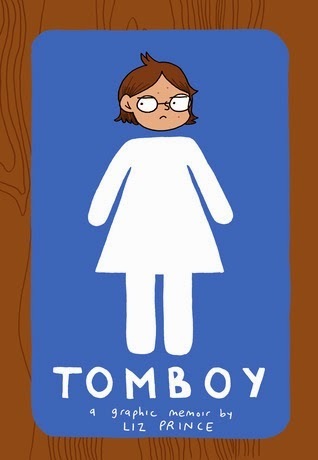 In yesterday's post, I wrote about how I enjoy getting my nonfiction via graphic novel, and I read two spectacular ones over this past weekend. Coincidentally (or maybe not), they were both graphic memoirs about growing up as a girl in America.
In yesterday's post, I wrote about how I enjoy getting my nonfiction via graphic novel, and I read two spectacular ones over this past weekend. Coincidentally (or maybe not), they were both graphic memoirs about growing up as a girl in America.Liz Prince's Tomboy addresses this topic a bit more bluntly than Telgemeier's Sisters does. Prince characterizes her identity as a tomboy as something she knew from almost the moment of birth, though she didn't know how to articulate it right away. She hates wearing dresses, enjoys playing sports, doesn't play with dolls, and looks down upon the "girly girls" who dress up like princesses and seem obsessed with makeup. The book takes Liz from her infancy up through her adolescence and into her later teen years, tackling friendship, bullying, dating, and other rites of passage. While it focuses primarily on Liz's struggle with her gender identity, the book is also a story about family and art, much like Sisters is.
Liz's preferred method of gender expression didn't make things easy for her. While attending Catholic school, she was forced to wear a dress for monthly mass, and it was tortuous. She was teased a lot, called derogatory names, accused of being a boy or a lesbian (and these were definitely accusations from her tormentors), and never felt she fit in. She wanted so desperately to be "one of the boys," but the boys wouldn't ever allow it, and of course, she never felt like she fit in with the girls.
Savvy readers will pick up on the fact that Liz herself pigeonholes people, buying into the very system that she rails against. At one point, she reads about a girl in a magazine who describes herself as a tomboy, but this girl wears a pretty dress to go on a date with a boy, and Liz instantly decides this makes the girl not a real tomboy. Liz puts boys on a pedestal, believing their interests and values are more worthy of respect than girls' interests and values, and this is part of what drives her desire to not be a girl.
Near the end of the book, Liz meets Harley, a woman who forces her to realize that she's unwittingly become a part of the problem, too. She's placed boys in one homogenous group and girls in another. Through Harley's guidance (plus Harley's encouragement of Liz's artistic skills), Liz learns to see herself as a girl and embrace that identity, even if she doesn't express that identity in traditional ways. This realization opens a door for Liz, allowing her to finally accept herself and settle into a personal identity that brings some happiness rather than discontent.
While both Sisters and Tomboy are about growing up as girls, they're also about growing up as girls who like comics. These kinds of books are especially important for artistic girls who have a passion for these kinds of things that are often relegated to the field of "boys' interests." I can just imagine a pre-teen or teenager becoming inspired by Raina or Liz, seeing them struggle and emerge victorious. After all, the books are proof of the victory!
This should resonate with teens who struggle with gender non-conformity, even in relatively minor ways, and get them to think more deeply about the damage caused when we label people as one thing or another. Fitting in is the perennial topic for teens' books, and for many, it's a struggle that dominates their lives for years. Finding your place, your people, your passion is hard, especially when it seems everyone is out to stop you from doing it. Even those teens who express their gender in traditional ways usually have trouble fitting in elsewhere, and consequently, they should have no trouble relating in some way to Liz's story.
Liz's age through most of the book, the themes addressed, plus some minor swearing and drug use make this a memoir best suited for teens. When Liz finally finds her people near the end and is able to develop her passion for comics, it's a gratifying moment. I think it's a moment that happens to a lot of teens right around the time it happened to Liz. It gives the book a nice coming-of-age arc and provides satisfying closure. This is a stellar example of what the graphic format can do - it's accessible, insightful, and fun to read. Highly recommended.
Finished copy provided by the publisher. Tomboy is available September 2.







 Related StoriesSisters by Raina TelgemeierSome Boys by Patty BlountAugust Debut YA Novels
Related StoriesSisters by Raina TelgemeierSome Boys by Patty BlountAugust Debut YA Novels
Published on August 26, 2014 22:00



